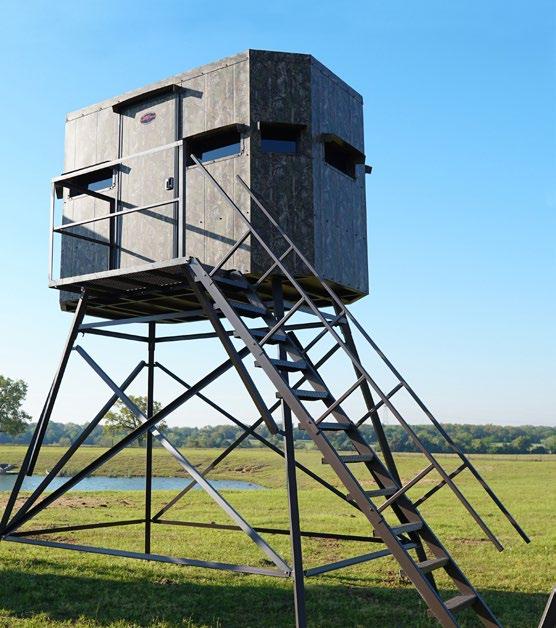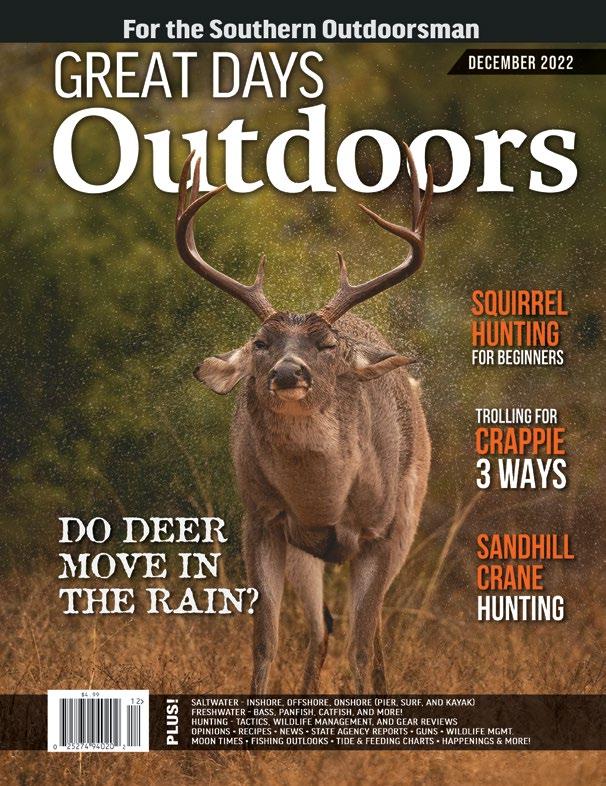






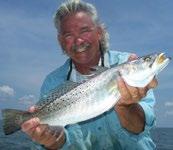
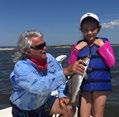
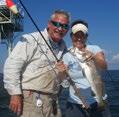



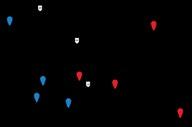
















Do Deer Move in the Rain . . . . . . . . . . . . . . . . . 8 by Josh Honeycutt
Live Bait Rigs, for Fast Action and Best Results, Rig It Right 12 by Ed Mashburn

Sandhill Crane Hunting Explained 16 by Nick Williams

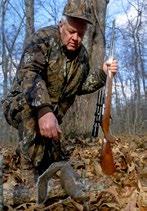
Gearing Up for Deep Drop Fishing 20 by Frank Sargeant
Squirrel Hunting for Beginners 24 by John E. Phillips

Trolling for Crappie 3 Ways 28 by Ed Mashburn
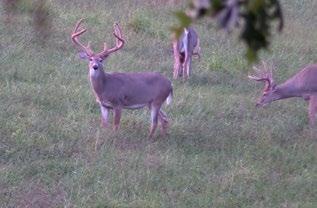
Picking the Best Shot Size for Ducks and other Waterfowl . . . . . . . . . . . . . . . . . . . . . . . . . 32 by David Strickland
Creating Land Equity Through Conservation . . . . 36 by Stephanie Mallory
Choosing the Best Baitcasting Rods . . . . . . . 40 by Jim Ising and Bobby Abruscato
Planting the Best Wild Turkey Food Plots for Spring and Fall 44 by Nick Williams
How to Grow Big Bass in a Pond 50 by William Kendy Points to Consider in Costa Rica
Fishing Charters . . . . . . . . . . . . . . . . . . . 54 by Stephanie Mallory Land Loan Interest Rate Update . . . . . . . . . . 57 by Great Days Outdoors Staff
Best Bets 6 by William Kendy
Camphouse Kitchen . . . . . . . . . . . . . . . . . . . 58 by Hank Shaw
New & Cool Gear for Outdoorsmen 60 by William Kendy
From the Commissioner . . . . . . . . . . . . . . . . 62 by Chris Blakenship From the Director 64 by Charles Sykes
Paddle Fishing . . . . . . . . . . . . . . . . . . . . . . 66 by Ed Mashburn
Coastal Outlook . . . . . . . . . . . . . . . . . . . . . 68 by Chris Vecsey
Pier & Shore 70 by David Thornton
Regional Freshwater . . . . . . . . . . . . . . . . . . . 72 by Ed Mashburn
Prime Feeding Times, Moon, Sun, and Tide Charts . . . . . . . . . . . . . . . . . . . . . 76
Pensacola Motorsports Trophy Room . . . . . . . 80 Great Days Kids Corner 82 Fishing Tips 85 by William Kendy A Great Day Outdoors . . . . . . . . . . . . . . . . . . 86 by Jim Mize
Cover art submitted by Triple Drop Ranch LLC


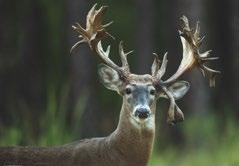
Marengo County, Alabama, 1,224+/-Acres
Whether you’re looking for a family hunting property, corporate retreat, tax shelter, or income producing business with resort level event, hunting, and recreational opportunities, you couldn’t dream of a better place than Soggy Bottom. Currently operated as a family retreat and commercial hunting, fishing, and event business, you can hunt monster bucks, elk, fallow deer, ducks, quail, pheasant, turkey, and dove, fish multiple large, trophy managed lakes, stay sharp with multiple shooting ranges & courses, and gather at two of the greatest custom lodges in the country. Located a few miles south of Linden, AL in the renowned Black Belt, Soggy Bottom was established in 2013 with a vision of creating a rustic sportsman’s paradise. Wildlife habitat has been developed and meticulously maintained for years, well-established native browse & a network of large, year-round food plots w/shooting houses that supply high protein food to the monster bucks. The duck ponds w/blinds are used for release duck hunts & also see wild waterfowl as well. Paved road frontage on two sides, each w/its own custom remote gates allowing for easy division or privacy when in use by two groups at a time, & miles of paved or improved internal roads. Water features are one of the most sought-after land improvements, and Soggy Bottom doesn’t disappoint. There are three professionally managed fishing lakes totaling 41+/- acres, two of which are adjacent to lodges, both with piers & pavilions, making them ideal for weddings or events and providing beautiful views along with full creels. Speaking of lodges, you couldn’t ask for better. The original Lodge, built from wood, beams, and tin salvaged from old barns, is truly a work of art. From its old Cokecontainer constructed cabinets to the wrap-around porch, you have to keep a lookout or you’ll miss unique details spread throughout. The Lodge has beautiful views of the lake, sleeps up to 18 with 3 expansive bedroom suites, en suite bathrooms, a commercial kitchen, an open dining room, game room, and den, and just outside is an outdoor kitchen and dining area that can seat up to 40. At Shack 33, it features 7 guest bedrooms and 39 beds, a private master suite with spa, commercial kitchen, dining area for 40+, and a game room with bar. The massive porch seats 80+ and has a hibachi grill, flat top, a large built-in grill and fryer, and outdoor fireplaces. Other amenities include an event pavilion, 8.75+/- miles of game fencing, 20+/- acre breeder pen, equipment barns, feed barn, concert stage, continental pheasant shoot tower, and diverse, merchantable timber throughout including pine plantations and scenic hardwood, contributing to its significant conservation easement opportunities.

These are our top targets for hunters and fishermen this month!
BY WILLIAM KENDY
By the time December rolls around, deer hunting season has been in full swing. Hunters are out, deer and moving and depending on where in the state you are hunting, the rut may be making love sick bucks act “goofy” if not just outright “stupid”.
Here are some tips.
Get to your stand early and hunt late. Keep in mind that other early morning hunters will start moving around 9:00-10:00 so stay where you are and be attentive. Let them keep the deer on the move and hopefully send them your way.
Hunt close to heavy cover, such as bedding and staging areas with options to take advantage of wind patterns to your advantage.
If you are physically able, hunt hard to access areas away from the crowd and their scent.
If you are a hardy cold weather Gulf fisherman the people in the know suggest that for successful fishing either in surf or from a pier to consider a few things.
For the surf fisherman, to target pompano, whiting and, in the morning, black and red drum, pay attention to the troughs just off the beach where, at low tide, the water is at least four feet deep. Use light spinning tackle baited with shrimp pieces or Fishbites.
If you are targeting pompano, utilizing double dropper rigs cast on long rods is the standard practice. Other species such as sheepshead, “bull” redfish and sharks can be caught.
For pier anglers, December is notorious for drawing schools of little tunny (“bonita”) who are chasing schools of baitfish. Throw ½ to ¾ ounce hex-head jigs or small spoons on light spinning tackle.
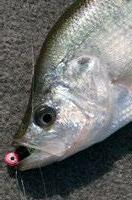
Bluefish and flounder are also fair game for pier anglers.
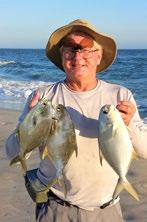
When it’s cold and you want some hot action, go crappie fishing.
Crappie have the wonderful tendency to come together in large schools providing you with a fish bonanza when (and if) you find them.
In December crappie hang around creek channels and on the edges of drop-offs within easy escape distance from brush and structure.
To locate them…long line troll. Hook up 1/32-to-1/8ounce jigs with 1 ½ to 2 ½ inch plastic swimmer tails in attention grabbing colors like yellow, chartreuse or white.
Use six-to-eight-pound monofilament line to go deeper, based on your trolling speed, to where the crappies are hanging out. The longer the line, the deeper the lure goes.
Once you locate a school, anchor and either cast the jigs, “jig” the jigs or fish with live minnows.


“Rain, rain, go away. Come again another day.” That’s a nursery rhyme we learn as kids. We sing it, memorize it, and sing it some more. It’s a staple, and one used to court the sun into “shooing” away those nasty rain clouds.
Yet hunters should sing this song with moderation. It’s a rain dance, if you will. Instead, it should go, “Rain, rain, come today. I need to shoot a big buck, yay!”
Not everyone agrees with this idea, though. Some biologists and hunters think there is something to it. Others do not. Either way, hunters need to pay attention. Rain has the potential to impact the pursuit of whitetails.
Surprisingly, there has been little research conducted to answer whether deer move more in the rain, or not. According to Levi Jaster, a wildlife biologist with the Kansas Department of Wildlife and Parks, the research is quite conflicting. The only study he’s aware of occurred in Oklahoma, and it found minimal effects or linkage between rain and deer move ment. Interestingly, his sentiment is that deer live outside, and frequently encounter rain. He says that they can’t do anything about it, and likely don’t allow it to affect them too much.
Moriah Boggess, another deer biologist who works with the Indiana DNR, shares a similar opinion. He says the topic is very complex, and that the answer likely varies from situation to situation. For example, a rain event might be welcomed in one situation, and spark deer move ment, and it could be a negative event in another situation, having mini mal, zero, or even negative effects. It’s all about the specific situation.
These things aside, a few studies have shown a correlation between light rainfall and increased deer movement. Still, more research is needed to provide a definitive scientific answer on whether deer move more in the rain, or not.
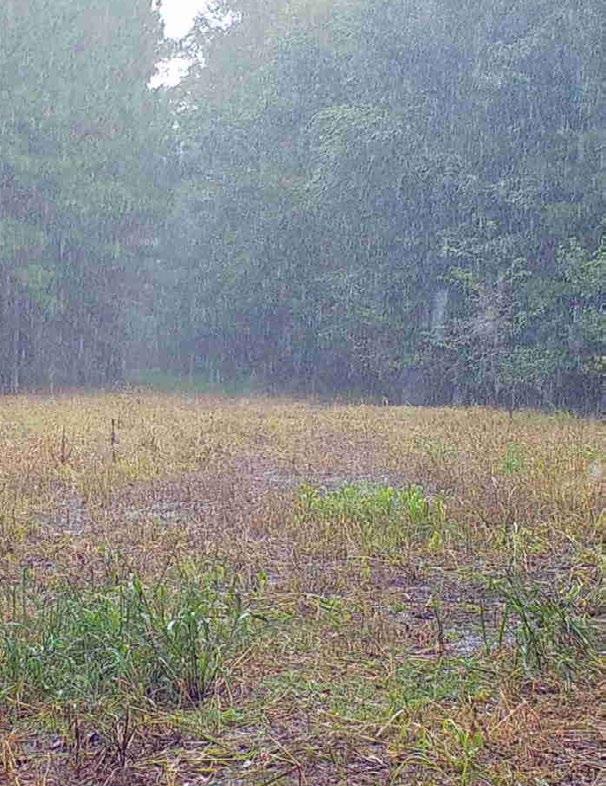
I’ve spent nearly 25 years in the outdoors. I’ve had many a day in the deer stand that produced rainfall. Getting wet isn’t fun, but I’ve seen the effects that rain seems to have on deer. While this isn’t a blanket state ment, I’ve seen numerous scenarios where rain seemingly helped.
Of course, there are different types of rain events, and I’ve had varying experiences with each one. In my experience, some of these spark deer movement, while others hinder it. Generally, according to my experience, I believe heavy rains and rain with lightning tend to halt movement, as most inclement weather does. That said, light rain showers, and rain that ends in mid to late afternoon can spur deer to “rise and shine”. So can rain events that are immediately followed by a temperature drop. Each of these scenarios tend to boost daylight deer movement.
Looking back across time, I’ve had several successful deer hunts on days with rain. While this situation is purely anecdotal, I tend to thank the rain for my biggest buck. You see, I first learned of the big whitetail in 2017. He survived the season and returned in 2018.
I patterned the deer throughout the summer. A few days into the archery season, I was presented with a shot opportunity. That said, it’s important for me to back up and explain more.
The afternoon began with a walk to a poplar tree I’d picked out days before. I knew it was a great spot to intercept the big deer as it emerged from the cedar thicket and fed through the clover and hay field. Soon after settling into the treestand, an early afternoon rainstorm blanketed the area in a damp covering of precipitation.
Incredibly, deer started moving during it and as it ceased. First, some does and then a few smaller bucks. After that, several great bucks walked out, and the massive velvet eight pointer was with them. He stepped out in all his glory, and after nearly 20 minutes of watching him, I finally got a shot opportunity. I struck the 10-ring, and the deer toppled over on the edge of the field.
So naturally, I’m biasedly fond of light rain events because of this expe rience. Still that doesn’t automatically mean everyone should believe rain boosts deer movement. Again, some instances seem to do so but others do not.
Regardless of the weather, deer are crepuscular animals. This means they move most at dawn and dusk. This has always been true, and will continue to be, so long as whitetails roam the deer woods. The bottom line is that no matter where the answer on this topic eventually falls,
The buck emerged shortly after a rain shower and remained in the open field feeding as it started to rain again The author was able to get a shot at the deer as raindrops started falling once more Honeycutt Creative Photo
hunters should always be careful when hunting in the rain. Always be cognizant of the situation, and never allow yourself to get too wet or cold in the outdoors. Even if you expect great movement, it isn’t worth risking hypothermia, or slipping and falling from a wet treestand platform.
While the research is conflicting on the significance of weather’s impact on whitetails, my anecdotal findings suggest there are certain weather-related times that whitetails move more, especially during daylight. These include:
• Sudden temperature drops after long warm spells
• Sudden temperature increases after long cold spells
• Just prior to weather fronts
• Just after weather fronts
• When the barometric pressure is rising
• When the barometric pressure is 30-plus
• Just after early to mid-afternoon rain events
• During fresh snowfall
• Just after heavy snowfall
It’s long been proven that deer are influenced by weath er, especially temperature. Interestingly, deer need carbohydrates to survive cold weather. These are the energy-rich nutrients they need to burn energy to stay warm. So, focus on carbohydrate-infused plants, such as acorns, corn, soybeans, etc., during colder weather. In contrast, during warmer spells, focus on green food sources, such as brassicas, clover, forbs, and other plant species.
877.314.1237
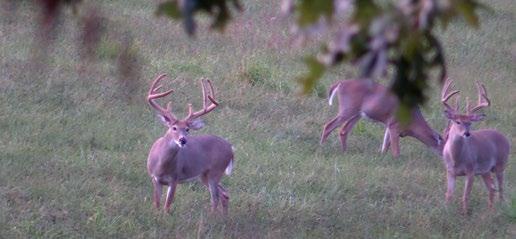
Deer regularly use the wind to their advantage. They don’t always walk with the wind in their nose. If they did, they’d all end up huddled up in tight pockets throughout the nation. Still, they do regularly use the wind to their ad vantage. Interestingly, in addition to wind directions, this might also include wind speeds.
Penn State University (PSU) is a leading whitetail re search machine. They produce groundbreaking data on deer with regularity and in doing so they commonly dispel old deer hunting myths. One of these includes deer moving on windy days. According to a PSU survey, more than 90% of hunters believe deer move less during higher winds. Ironically, PSU research has proven deer move more with increased wind speeds.
In fact, their first round of research (https://www.deer. psu.edu/winds-surprising-effects-on-deer-movement/) showed that deer move less when there is no wind than when it’s very windy. Deer move more when the wind is one to three miles per hour (mph) than when it’s com pletely calm. When winds reached or surpassed 10 mph, activity increased even more. This remained true for daylight movement as well.
Some said this was a fluke, or at least flawed research. So, PSU conducted the study again (https://www.deer. psu.edu/blown-away/), and made it even more detailed. The second study revealed an even greater impact than the first, showcasing that higher winds do in fact lead to increased daylight deer movement. These results also held true for mature bucks. Interestingly, the wind seemed to impact them even more than it did does.


When it comes right down to it, there’s no better or more reliable way to catch fish than by using live bait. Live bait presents gamefish with an irresistible situation, an easy meal, and it’s right there in front of the fish-so it’s going to eat it!
Whether an angler uses cigar minnows for big king mackerel in the Gulf, fiddler crabs around wintertime pilings for sheepshead and black drum, or shrimp for redfish, and everything else than swims, live bait is a proven way to catch fish.
However, even though using live bait is extremely effective, there are some rigging techniques which make the live bait game more effective.
Captain Yano Serra has fished and guided on the Mobile Bay system for many years, and is a live bait and live bait rig expert. Here is his advice.
This is a simple rig for live bait. A split shot sinker is pinched firmly on the leader, and the bait is cast to the desired location. Split shot used can be as light as 1/32 ounce to as much as an ounce. This is primarily a shallow water live bait rig. Whether pitching live shrimp in a bayou to dropping crabs to dock pilings or throwing sand fleas to pompano off the beach, the split shot rig will work.
“When I’m using live shrimp, I’ll use a split shot rig 99 % of the time. I love a split shot rig. I’ll use just as small a split shot as I can to get the bait down,” Serra said.
“I’ll use a split shot rig with a two-foot leader from my braid main line. I’ll put the split shot about seven to eight inches above the hook. The key to using a split shot rig is to use the smallest weight you can use to get the bait down in the current,” he added.
The Carolina rig, also known as a “fish-finder rig,” is useful in many situa tions. The weight of an egg-shaped sliding sinker can be from ¼ ounce in shallow water situations to as much as four or five ounces for offshore deep water reef fishing.
Basically, the Carolina rig is constructed from a sliding egg sinker placed on the main line that is secured to a swivel which is attached to the leader. This rig allows the egg sinker to move freely up and down the main line and allows a fish to take the bait and feel no pressure from the sinker.
“For my usual inshore fishing, I’ll use 30 pound. PowerPro braid main line
and a mono leader. I don’t use a fluorocarbon leader and I use a two-foot mono leader but more than two feet of leader is too much,” Serra explained.
“Choosing the right hook is important. When I’m using shrimp, I use a num ber 8 or number 10 four-strong treble hook. When I am using croakers, I’ll use number 6 four-strong treble hooks. Both Mustad and Eagle Claw make good hooks. Weaker hooks will bend,” Serra noted.
This rig looks and works somewhat like the Carolina rig, but there’s no swivel to stop the sinker from sliding all the way down the leader to the hook. The sliding sinker is applied to the leader below the main line swivel. This rig allows the weight to follow the hook and bait all the way to the bottom where the bait will be held securely.
The knocker rig is most often used in deep water for big reef fish or in situ ations where the current is really ripping. A knocker rig will keep the bait on the bottom, and the leader and line have much less chance of being twisted by the current.
If you’ve ever been on a party boat fishing for red snapper, then you’ve seen and used a chicken rig.
This multi-hook rig uses a heavy weight tied to the end of the leader and it has two or even three circle hooks tied on dropper loops above the sinker. This setup is good for keeping the lines going straight down to the deep water reefs and it minimizes twists and tangles.
The chicken rig is probably responsible for more pounds of fish caught out in the Gulf than any other fishing set up. It is not at all uncommon for a chicken rig to provide a good reef fish on every hook when it is dropped to the reef below.
This rig, modified to use much lighter line and weight, is also a very effective beach fishing rig. This multi-hook rig used with a non-rolling pyramid sinker of an ounce or two weight is a very good way to catch pompano and whiting off the beach.
This is perhaps the most complicated live bait rig, but it can be very effec tive. A slip cork rig uses a fine fiber section of line which is attached to the main line. This little piece of line can be moved up and down the main line to any desired depth setting, from two feet to as much as twenty feet or more. Then a small plastic bead is run on the main line. This bead is what reaches



the little “stopper” line and holds the bobber in place. Then the freely sliding bobber is placed on the main line. The main line is then attached to the leader by way of a good strong swivel and with a split shot added to take the hook and bait down, the rig is complete. To tell the truth, this rig is much easier to set up and use than it is to explain how it is used.
Captain Yano Serra is a master at slip cork fishing catching everything from half-pound silver trout to thirty-pound tripletail to 150 pound tarpon on this very effective slip cork rig..
“The kind of cork you use is important. I don’t like balsa corks. They cost too much and they don’t last. I use red and white styro corks. I buy them by the fifty-cork bags,” Serra explained.
The slip cork is a very versatile live bait rig. It can double as a popping cork.



“I like a slip cork better than a popping cork. I can adjust a slip cork on the fly- as I need to make changes. With a popping cork, you have to cut the line, retie the leader and re-set the cork to change the depth. With a slip cork, I can get the depth right where I want it,” Serra pointed out.

When asked about the key to slip cork fishing, Serra said that the key to using a slip cork rig is to flip it away from the boat and feed line so the rig can drift. Then ‘“pop” the cork. When the cork goes under, reel as fast as you can and then set the hook.”

If some live bait rigs are a little complicated to rig and use, the flat line is just the opposite. It is simplicity itself. A flat line consists of a main line, swivel, leader, hook, and bait. No beads, no weight, no bobbers. And the flat line accounts for many, many fish of all species.
Inshore, a live bull minnow or finger mullet fished on an unweighted flat line will attract the attention of redfish, trout, flounder, just about anything that is present. In the deep water of the Gulf, a flat-lined cigar minnow or other lively bait won’t swim long before something big and toothy will come along and take the bait. Flat lining is a great way to use live bait to catch fish.
Serra uses a flat line rig for specific uses like catching the biggest fish in the area.
“When I’m fishing live croakers on a flat line, I’ll go to a three to four foot leader from my mainline. I use a mono leader. When I use live croakers, I always hook the croaker behind the anal fin because when hooked this way, the croaker will swim more actively, and when the big fish eats the croaker, it will take the croaker headfirst always, and this way of hooking the croaker allows a better hook set,” Serra explained.
Serra’s key to using live bait on the flat line is important. “The key to fishing live croakers on a flat line- throw the croaker up current and off to the side of the boat. Give enough slack to actually not feel the croaker. The croaker will twitch the line, but if you feel the croaker, it’s not good. If you can feel the bite when the fish first hits the croaker, the fish will feel you and drop the croaker. Give slack until the fish tries to take the rod out of your hands,” Serra concluded.
Sandhill cranes have had a rocky past, but thanks to careful conservation efforts their numbers have increased to the point where a huntable population has been attained . Credit Billy Pope

Four years ago, a new species was added to the list of game animals in Alabama.
By opening registration for Sandhill Crane permits, Alabama be came the third state east of the Mississippi river to allow hunters to pursue these birds.

I have hunted almost everything that can be hunted in Alabama. Deer, turkey, small game and waterfowl of course. I’ve also hunted lesser-known species such as snipe, sora, and gallinule. Still, I have never had the chance to chase cranes. When my editor reached out to me with this article assignment, I was pleased to have a good excuse to investigate the opportunity.
In order to learn more, I reached out to Alabama DCNR’s Migra tory Game Bird Coordinator, Seth Maddox. I have always found DCNR officials to be knowledgeable and helpful, and Mr. Maddox was no exception to that rule.
The first thing I wanted to know was, what was the success rate for the draw? I’ve been putting in for alligator tags and Special Opportunity Area (SOA) hunts for years now, and while they pro vide amazing opportunities, the odds of getting drawn on a given year are fairly low in my experience.
“It’s not like the SOA hunts,” Maddox told me, “Hunters have much better odds with the crane permits. The first year we had the season, we were looking at about a 70% selection rate. That’s dropped a little as more hunters became aware of the season and applied for the permits, but for this year we were still right around 60%. So hunters have a pretty good chance of getting selected.”
Maddox was also kind enough to send me the links to the Sandhill Crane Harvest Data Reports, which can be found on the Outdoor Alabama website (www.outdooralabama.com).. Data for the last season indicated that about 40% of hunters managed to bag at least one bird, and the average harvest for successful hunters was two birds. Given that hunters are only allowed three tags, those are pretty good success rates.
Where are hunters allowed to hunt cranes if they’re drawn for a permit?
“Sandhill Crane hunting is allowed in basically the northern third of the state,” Maddox said. “You can hunt them anywhere north of the I-20 and I-22 corridor.”
“Most of our successful hunters are finding birds on private land, either in agricultural areas or on properties specifically managed for waterfowl but there are guys having success on public land too,” Maddox stated. “A few of the WMAs in northeast Alabama hold birds. Crow Creek WMA and Mud Creek WMA can hold them. And there is a lot of TVA (Tennessee Valley Authority) land along the Tennessee River Valley that people can hunt.”
What are the secrets to success? Madox’s answer will come as no surprise to seasoned waterfowl hunters.
“You have to put in the time to scout and find where the birds are especially for the hunters in the lower parts of the state that may get drawn and not know the areas they end up hunting very well,”
Maddox said, “You have to be willing to put in the time to scout and glass for them before you pick a spot. When we talk to unsuccessful hunters, a lot of the time they are the guys who just show up and hunt a

Once you find the cranes, Maddox shared
“Cranes have really incredible eyesight,” Maddox pointed out. “They see as well or better than turkeys, so you have to be well-hidden. They respond well to decoys, but you need to be in a place they want to be, and you can’t let them see you.”
Maddox filled me in about sandhill crane

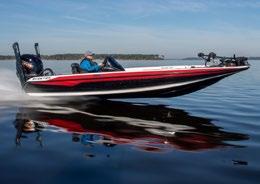

“Cranes are not particularly early risers,” he said. “With waterfowl, the regulations on shooting light are that you can shoot 30 minutes before sunrise until sunset. With
Shooting light begins at sunrise, not 30 minutes prior. They don’t fly predawn, so you don’t have to get up as early. You can get out there as late as seven or eight o’clock in the morning and have a good hunt. They’ll fly until pretty late in the
morning, and after a little downtime in the middle of the day, the activity will pick back up again in the evening,” Maddox explained.
Maddox said that he had personally been lucky enough to be drawn the first year the season opened, and while he hasn’t been drawn since (DCNR officials have to enter into the drawing pool just like any other hunter), he had personal experience as a hunter and could make some recommendations on gear.
“A lot of times there’s not much cover in the areas they like to be in so a layout blind helps a lot,” he advised. “They seem to respond better to fullbody decoys than silhouettes. Some hunters go as far as putting out real, stuffed birds, and that works well. They also make sandhill crane calls, but they can be harder to run than most duck calls.”
I asked him what choke and loads were appropriate for the jumbo-sized birds.
“I’d recommend a full choke and “#2 shot is about right. Some hunters use BB size. You could probably make #4 work, but that’s getting small,” Maddox explained. “The biggest thing is to shoot them close. You want them 40 yards and in. Beyond that, and even heavy loads start to really lose effectiveness.”
Maddox pointed out that while some birds such as gallinule, dove, and snipe could be hunted with lead shot, the nontoxic shot regulations for waterfowl applied to cranes as well.
“We made that decision for the hunters’ sake. The crane season lines up a good bit with the state’s regular waterfowl season, and cranes and ducks frequently share habitat. Requiring nontoxic shot means hunters can legally shoot ducks and cranes during the same hunt using the same equipment,” he said.
While we didn’t directly discuss it, I would say that my experience leads me to recommend bismuth or tungsten over steel for such a large bird. These metals are more expensive than steel, but heavier, which translates to better energy retention down range.
Since I’ve heard the phrase “ribeye of the sky” thrown around a lot during discussions about the edibility of sandhill cranes, I asked Maddox if they lived up to the hype.
“I definitely think they have a beefy taste,” he let me know. “I wouldn’t call it ribeye since they really don’t have that fatty marbling. It’s more like sirloin to me but they’re very good table fare,” he joked. “They’re grain eaters, so they don’t get the fishy or muddy undertones that some ducks can get depending on their diet.”
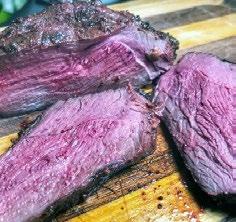
I knew they were big birds, but I was surprised at how meaty they appar ently are.
“Most of the meat is in the breast,” Maddox explained. “You can breast them out like most other birds, and you’ll get two pieces of meat that are probably 15 ounces each and It’s really good meat. The leg quarters have some more meat on them, and it’s good, but it has a lot of tendons in it and is best slow cooked to break that down.”
Alabama provides no shortage of hunting opportunities, and the new sandhill crane season is an exciting new addition to those opportunities. Hopefully, this article has given you the information you need to be suc cessful should you decide to pursue this new opportunity!
With the nickname “ribeye of the sky,” sandhill cranes are considered one of the best tasting migratory birds hunted during the waterfowl season
Prep: 20 mins • Cook Time: 10 mins • Total: 30 mins
Ingredients
• 2 boneless sandhill crane breasts
• ¼ cup olive oil
• 2 tbsp soy sauce

• 2 tbsp Worcestershire sauce
• Juice from 1 lemon
• 1 clove garlic, minced
• 1 tbsp seasoned pepper, such as Montreal Steak Spice
• 1 tbsp poultry seasoning
Instructions
1. Trim breasts of any bruising or shot trauma. The crane can be cut into one-inch cubes for kebabs, or done as a whole breast, like a steak. Make sure the meat comes to room temperature before grilling to allow it to heat through properly.
2. Combine the olive oil, soy sauce, Worcestershire sauce, lemon juice, garlic, pepper, and poultry seasoning in a sealable bag or plastic container.
3. Place the meat in the marinade, push out any air and seal. Toss the bag to ensure the marinade covers all surfaces of the crane meat. The meat should marinate at least four hours, and up to 48 hours.
4. Heat a barbecue grill to 400°F. Remove the crane from the marinade and place it on the grill. Sear each side for about 4 minutes. A larger crane could take 5 to 6 minutes per side. Kebabs will take 2 to 3 minutes per side.
5. Remove the crane from the grill, wrap in foil, and let it rest 4 minutes before serving.
Barrelfish are also a sometimes large and always tasty addition to the deep water menagerie . (NOAA)

If your greatest dream is to someday catch a 10-pound fish, deep drop fishing may be a bit of a shock to your system.
In this game, the weight alone can weigh 10 pounds and more!
Why so much weight? Because you’re trying to hit bottom a quarter mile down! The enormous length of line ballooning in the current can make it nearly impossible to get a bait to bottom without the gi-normous weights.
Why fish so deep? Because there are amazing fish down there that most anglers have never seen, caught or tasted before.
Critters like barrelfish, golden tilefish, yellow-edge grouper, snowy grouper and long-tailed sea bass are just a few of the strange critters of the deep.
Deep-dropping is in its infancy, with only a few charter skippers and private anglers making the long runs and fishing the right equipment to connect. On many spots, it’s likely your chicken rig and cut bait will be the first ever to hit bottom there, and the fish respond accordingly.
Not to say it’s easy to get into deep drop fishing. Fuel costs alone are just short of those for long-range marlin fishing. While you don’t have the expense of hours of trolling, the distances run are similar. The fishing starts at the edge of the continental shelf, typically 30 to 40 miles out in the Gulf of Mexico.
With quad 400-horsepower (hp) outboards pushing a boat at less than two miles per gallon (mpg), the fuel pump is going to be ringing like a slot machine rolling out a jackpot. The few charter skippers who offer deep-drop bottom fishing typically add $200 per day to their base charge for the extra fuel.
It also requires specialized equipment. While hardy young anglers might be fine with cranking up a eight pound weight from 1,000 feet a couple of times, even the most intrepid will want an electric reel after that. This gear can be expensive with some rigs costing over $6000! Fortunately, some less expensive models are also available, see below.
The offshore structure can be anything from the edge of the continental shelf to “salt domes’’ formed from rock overlying huge salt deposits that over millions of years push upward to create a dome. Deep water wrecks and seamounts (submerged volcanic mountains) are also likely targets.
The fish that inhabit the depths from 500 to 3000 feet are species never seen by anglers who fish inshore. Nearly all the extreme deep water fish are supreme table fare and some are even better than red snapper caught inshore according to deep water experts. These fish can be large, with yellow-edge and snowy grouper sometimes exceeding 20 pounds, tilefish 12 to 20 pounds.
There is no catch and release fishing at this depth with high-speed electric reels, because the rapid ascent from extreme depths usually kills the fish outright. So smart anglers take lots of ice, bleed and gut the catch soon after it comes over the rail and immediately ice it down. This results in great tasting fillets of fish most people will never taste when the cleaning job is finished back at the docks.
You’ll need at least one electric reel and matching rod, but most who make the long runs invest in at least two or three to have backups and to fish multiple lines. Most anglers spool 80-pound braid and 200- to 300-pound
fluorocarbon leaders to prevent the sharp teeth of many species from cutting through.
Seasoned deep-droppers advise taking along enough line to respool at least one of your reels in case you have a monumental backlash or some other line disaster that wipes out your braid. You don’t want to be 150 miles out and not have a functioning deep-drop rig on the boat.
Line counter reels are popular, allowing the angler to closely estimate when the lead is about to hit bottom and giving the ability to fish slightly off bottom without actually hitting it.
A Shimano Beastmaster A 9000 goes for about $1,500 and delivers up to 55 pounds of drag. It also has a line-counter and a winding strength of 290 pounds.
At the other end of the scale, the Hooker Electric Penn® International® 80 VISW goes for over $5,000. The Hooker Electric Shimano Tiagra 130A Au tostop reel goes for $5,700. (A Penn International 80 VISW without electric wind is about $930, by comparison.)
Bent-butt rods with aluminum handles and roller tips and very heavy action are necessary, of course. So is a DC plug near the rod holder as a power-source.
Aftermarket companies like Hooker Reels make power winders that can be fitted to Penn, Shimano and Daiwa lever drag reels. Some include level-wind devices, which allows the angler to keep hands free of the line as it rapidly rewinds under power.
Rods to match the reels are often constructed of double blanks to make them tough enough to stand the pressures of 65 pounds of drag or more. The Daiwa Tanacom Dendoh series sandwiches uni-directional fiberglass between 90º inner and outer layers of graphite. The result is an incredibly resilient blank with the backbone and lifting power to control and move strong fish. Aluminum butts are curved, and the reel seat is often built right into the aluminum butt for maximum strength. Swivel tip top with roller angles the line down from the tip to reduce friction. The 6’6” model is about $200.
Fresh squid is a favorite of most deep drop anglers, with chunks three to five inches long for smaller species, or a whole squid up to 12 inches long for larger tilefish and barrelfish. Fillets of fish including bonito can also do the job—chunks about four inches by three inches are favored.
Hooks are typically 7/0 to as large as 16/0 circle hooks, depending on what you hope to catch. Most anglers use these on chicken rigs, with multiple dropper leaders, up to five of them, above the weight hung below.
Weights vary from three pounds for depths of 500 feet or so and minimal current up to 10 pounds for depths over 1000 feet and fairly high current flow. (Expert skippers say too much current makes deep drop fishing nearly impossible, however—it’s better to move several miles to find slack water than to fight high current.)
Some of the reefs you might want to hit at depth will be no larger than the average suburban bedroom, so hitting them exactly is both art and science. It takes a smart, experienced skipper to position the boat in the right spot to allow a fast drop that lands on target before wind and current push things out of kilter.
So it’s basically a one-drop and repeat deal. 877.314.1237
Salt domes like these at depths of 800 to 1000 feet are sometimes good targets for deep-drop fishing, holding a variety of benthic ocean fish rarely seen inside the continental shelf (NOAA)

Of course anchoring is not even a consideration at this depth as nobody is going to carry a quarter-mile of anchor rope. However, trolling motors can help keep the boat vertically over the line and extend a drift. Long-shaft trollers are a must.
When you hit the right spot, the action is usually immediate since the fish have no experience with baited hooks. You’re likely to feel a bite as soon as the bait gets down to within a few feet of bottom provided your drop has landed on the structure below.
Having said that, deep-drop experts advise not starting to crank up imme diately. Leaving the rig down for another 20 to 30 seconds often results in hooking multiple fish on a single drop, giving more “payoff” for the long retrieve.
There’s no hook-setting at this range, of and you simply hit the retrieve button and let the reel tighten up and pull the circle hooks home. Keep the button pressed until you can see color coming up from the depths, then slow down so that you don’t crank the top hook into the rod tip.
While sharks are not as much of a problem at this depth as they are on inshore reefs, they may move in to pick off fish left hanging near the surface if you’re not fairly quick at getting them aboard. It is best to hand-line them over the rail, or if you luck into a 20-pound snowy grouper or tilefish, stick them with the gaff and get them in the boat.
Check the state and federal regulations on harvest before you load the box with fish you don’t recognize. While many species have no limits, others do and you’ll need to know the difference.
Deep drop pros say that while most deep water reef fish are excellent table fare, some species seem to spoil more quickly than inshore species. Because of that, it’s important to gut them as soon as they’re caught and get them buried in ice. Be careful not to cut open the bladder or digestive tract when cleaning, as in cleaning a deer, these can flavor the meat.
Tilefish and barrelfish are among the most prized of the deep-water species, outstanding any way you cook them—and just fine as raw sashimi, as well.
There are not a lot of charter boats offering deep-drop reef fishing at pres ent. One that does is Captain Kurt Tillman of Dauphin Island who runs 39 and 35 Contenders or a 31 Ameracat. It’s expensive as you’d expect consid ering the fuel use and wear and tear on gear, plus trips that extend 12 hours in most cases. Tillman charges $3000 for up to six anglers; 251-288-1003.
Electric-powered reels like this one are big, heavy and expensive but they make easy work of cranking fish up from 1,000’ depths (Lindgren-Pittman Reels)


Learning to hunt squirrels can teach you all the skills required to be a big-game hunter .

Everything that’s required to be a good deer or turkey hunter can be learned from squirrel hunting, giving you lifelong skills every outdoorsman needs for small and big-game hunting and creating forever memories. Beginning hunters, no matter what their ages, can best learn to squirrel hunt by:
• wearing camouflage from head to toe, including a face mask and gloves;
• hunting with an experienced squirrel hunter at daylight or in the late afternoon when squirrels are moving the most;
• scouting carefully, often with binoculars, like hunting bigger game requires.
“You can’t walk in flat woods or down a creek bank and expect to see squir rels,” explains J. Wayne Fears of Huntsville, Alabama, a gun writer for more than 50 years and an avid squirrel hunter.”
“You need to know what to look and listen for, and how to use your binoculars. Squirrels must have water and search for food like blackberries, mulberries, plums, hickory nuts, acorns, mushrooms, poke sallet and much of the same foods that deer eat. You also must identify the trees that drop their nuts first, concentrating squirrels,” he said.
According to Fears, once cold weather starts moving in, the squirrels will be in treetops and then later on the ground, when trees don’t have leaves, digging up their buried acorns. He advises hunters to notice the tree limbs bouncing up and down, and use their binoculars to determine whether that motion is birds or squirrels.
*Moving slowly and quietly and which wins the race to squirrels, often by walking roads or trails and moving through shallow water to keep from spook ing squirrels; Fears said.
“Practicing this aspect of squirrel hunting is particularly important because we live in a ‘hurry-up’ world. But as you move through squirrel woods, the slower and quieter you move, the more squirrels you’ll find and take when you’re looking and listening for squirrels,” Fears explained.
Additional advice.
• Create a path to walk quietly by raking and using pruning shears to clean the route;
• Learn the sounds squirrels make to identify places where they are, without having to call to them.
“I recommend you listen for squirrels to chatter (bark),” Fears explained.
“They also make high-pitched whines. Although biologists don’t know all about a squirrel’s vocabulary, these two sounds as well as rustling in the leaves will alert you to where squirrels are hiding.”
Fears shared some additional advice.
• Cause squirrels to give away their positions by using squirrel calls;
• Measue distance with a rangefinder and looking for clues in the woods before shooting;
• Practice hunting safety, something even young children can learn about: what’s the proper, safe way to carry guns, with or without slings; when to bring the gun up to shoot; what to look for; and why have a rest to steady the gun before shooting;
• Use open sights to sight in a rifle, if not hunting with a rifle scope, espe cially in low light conditions.”
• Aim at a small part of the squirrel, instead of trying to shoot the entire
squirrel;
• Find and recover a shot squirrel and learn how to skin and prepare it to be cooked.
Although more than 200 species of squirrels live worldwide, the main U.S. ones are fox, gray and flying squirrels. Three methods take squirrels, stalking, still hunting and dog hunting.
Stalking refers to getting close to the squirrels without spooking them before taking a shot. To stalk productively, keep a big tree between you and the squirrels, so they can’t see you move.
To still hunt, go to an area where you’ve found squirrels feeding. Sit completely still for 20-30 minutes before daylight or late afternoon. Squirrels will come from their hiding places and start to feed.
The third tactic is dog hunting squirrels, which is primarily used once the leaves are off the trees. You need to hunt with a dog that knows how to tree squirrels by running through the woods without spooking the squirrels, picking up their scent and usually identifying the tree where the squirrels are. Then move in as close as possible - without being seen - and take your shot.
“Most squirrels are harvested at 50 yards or less. A proficient rifleman and squirrel hunter often can take a squirrel at 25 yards or less,” Fears reported.
“You need to purchase a rifle that consistently will shoot accurately with either iron sights or a .22 rifle scope. You may want to consider purchasing a quality rifle scope that doesn’t cost so much that it breaks the bank,” Fears said.
“Four components are required to be a good squirrel hunter: shoot accurately; have a rifle that shoots accurately; use a rifle scope that allows you to consis tently place the bullet where the crosshairs in the scope say the bullet should hit; and shoot ammunition that the rifle shoots best. Because squirrels are small targets, the accuracy of all four components is critical for bagging them.”
Fears names five rifles as the best for a beginning squirrel hunter: the Ruger 10/22 autoloading rifle; the Savage A22; the Browning T-Bolt semiautomatic 22; the lever-action rimfire Henry Classic; and the Winchester Wildcat 22.
* The Ruger 10/22 is Fears’ first choice.
“The Ruger 10/22, is used by serious squirrel hunters. It offers the advantage of allowing the owner to customize it to his own wants or needs. He can put a different barrel, stock or trigger on it if desired,” he said. “This rifle is first on my list because all the parts can be changed out easily for the squirrel hunter,”
“Choosing the right ammunition for your gun is probably the trickiest ingre dient for being able to shoot accurately at distances from 25-50 yards for the beginner to take squirrels,” Fears explained. “Every .22 rifle has its own personality. Buy several different kinds of .22 rounds, made by various com panies, take your rifle and ammunition to a shooting range, and determine what type of round, made by what company, shoots most accurately in your rifle. In my experience, very high-velocity ammunition doesn’t shoot as well as lower-velocity ammunition.”
Fears particularly likes the Winchester Hyper Velocity .22 Long Rifle (LR) Hollow Point ammunition. He wants to shoot squirrels in their heads, so as not
Haydel’s Mr. Squirrel Whistle makes the sound of a young squirrel being caught by a hawk and will cause other squirrels to come out of their hiding places and either bark or whine
to damage much meat. A hollow-point bullet will fragment into three different pieces when it hits the squirrel. Then you won’t have to chase a wounded squirrel through the woods.
“Manufacturers of rifle scopes have produced some high-quality products through the years,” Fears pointed out. . “You don’t have to buy the most-ex pensive scope at the gun shop.
Many of the medium-cost rifle scopes will shoot accurately, if your gun shoots accurately.

“The Leupold Vari X has a 60-yard focus option and is designed for a .22, not a centerfire rifle. On most rifle scopes, the boxes they’re in will tell you the scopes are adjusted for a .22 rifle, and most are adjusted for accuracy out to 100 yards. However, a .22 long rifle scope needs to be adjusted for accuracy at 50 yards Fears explained. “Make sure you buy a rifle scope designed for a .22 rifle and not a big game scope. Some of the best, medium-priced .22 rifle scopes are made by Leupold and Weaver.”
Squirrels make more than 10 iidentifiable sounds. They: rattle and screech when defending their territories; bark and buzz to alarm other squirrels; “kukkuk-kuk” and “qua qua” to warn; “seet” to denote a terrestrial predator and “seet-bark” to alert other squirrels to an aerial predator.
Numbers of squirrel calls are on the market today, with the most-popular one is a wooden call with a bellows on the call’s back. You pat the bellows with your hand, and it produces the sound of a squirrel barking. If the squirrel barks back, then you’ll know the squirrel’s general location and often its specific location.
A squirrel will squeal and that is usually after it barks. A bulb type call that you squeeze will sound like a squirrel squealing.
Fears feels that the Faulk’s Chatter Bulb Squirrel Call is the best squealing squirrel call but there is more to the story.
“The call I’ve had the most success with is a Haydel Squirrel Whistle that sounds like a young squirrel squealing in the early season. At the same time you give this call, you need to shake a bush or beat the ground with a small limb with leaves on it to imitate the sound of a hawk’s wing beating when it drops out of the sky, catches a young squirrel in its talons on the ground and tries to keep its balance while killing the squirrel,” he said.

Browning Guns https://www.browning.com/products Cabelas https://www.cabelas.com/shop/en/henry-classic-lever-action-rimfire-rifle Faulk’s Calls https://www.faulkcalls.com/product-page/squirrel-call Haydel’s Calls https://www.facebook.com/haydels/ Leupold Rifle Scopes https://www.leupold.com/shop/riflescopes
Ruger Guns https://ruger.com/products/1022/ Savage Guns https://www.savagearms.com/ Weaver Rifle Scopes https://www.weaveroptics.com/optics/ Winchester Ammunition https://winchester.com/Products/Ammunition/Rifle Winchester Guns https://www.winchesterguns.com/products/rifles/wildcat-22.html
Using a bellows-type squirrel call and patting it with your hand will make the sound of a squirrel barking .
Prep: 20 mins • Cook Time: 2 hours • Total: 2 hours, 20 mins
Ingredients
• 4 squirrels, cut into serving pieces
• Salt
• ¼ cup Creole or Cajun seasoning (optional)

• 1 ½ cups flour
• ¼ cup bacon fat, lard, or peanut oil
• 1 large onion, grated (see above)
• 2 cloves garlic, minced
• Half a can of beer (see above)


• 2 cups stock (squirrel, pheasant, or chicken)
• ½ cup heavy cream
• Worcestershire sauce to taste
• Black pepper and hot sauce to taste
• Chopped chives, green onions or parsley, for garnish
Instructions
1. Salt the squirrel pieces well and let them sit on the counter while youchop the garlic and grate the onion; if you don’t have a grater, mince the onion.
2. Mix the Creole seasoning with the flour and dust the squirrel pieces in it.
3. Heat a big frying pan you can put a lid on and add the fat. When it’s hot, add the squirrel and brown well over medium-high heat. Remove the pieces as they brown.
4. When all the squirrel has browned and been removed from the pan, add the grated onion, and cook, stirring often, for 3 minutes. Add the garlic, and cook for another minute.
5. Dust everything in the pan with the flour mixture; you want it to look like a light snowfall. Mix well, then slowly pour in the beer, stirring constantly. You ultimately want a very thin gravy that’s the consistency of melted ice cream, so you’ll likely need to add the stock as well.
6. When the gravy reaches the proper consistency, return the squirrel to the pan along with any juices that may have accumulated while they are resting. Cover the pan and simmer very gently until the squirrel is tender, anywhere from an hour to 2 hours.
7. When the squirrel is tender but not falling off the bone, add the cream, Worcestershire sauce, black pepper, and hot sauce. Let this all cook a bit—5 minutes or so—then serve, garnished with the chives.
Looking for your own place to hunt, fish, enjoy 4-wheeling—even a building site for a cabin or home? Alabama Ag Credit is the original land lender and your local expert in recreational real estate financing. We understand the unique requirements of long-term rural real estate lending, and can custom build loan packages with competitive rates and flexible terms. So you can enjoy the great outdoors for years to come! AlabamaAgCredit.com
When a pastime becomes a passion. Some don’t get it, but we do.
Trolling for crappie can produce some great catches of big fish.

We all love springtime crappie fishing when the big slabs are in shallow water and eating up everything that comes along in front of them. Having said that, to be honest, this hot springtime bite doesn’t last too long in most places.
For much of the year, crappie are not up in the shallow where they can be located easily and caught quickly. Anglers need a way to find and catch open water and deep water structure oriented crappie, and the best way to do this “non-spawn” fishing for crappie is by trolling.
Loads of crappie are caught by anglers who have mastered the trolling techniques, and we have some good advice from an expert who makes his living putting anglers on big crappie bites all year long.
Captain Lee Pitts is a full-time fishing guide on Weiss Lake, known as the “Crappie Capital of the World” as it is known, and he has forgotten more about crappie fishing than most folks will ever know.
We talked to Pitts about his setups for trolling for crappie and how he goes about it.
“I pay very close attention to my Humminbird electronics all times of the year. As I pass through fish, they not only reveal their location, but also depth. This allows me to know what speed I need to pull my Bobby Garland baits through,” Pitts said.
“Long line trolling is very effective in early season when the fish are school ing up and not holding tight to cover and are suspended and following bait, “ Pitts explained.
Setting up the multi-rods and reel rigs is crucial for this kind of crappie trolling. Most anglers will use several rods on a single troll, but positioning these rigs is crucial.
“What I prefer is to taper my rods in different lengths starting out with front rods being the longest rods at ten to twelve feet. I will angle these rods at a 90 degree angle. Then I will taper my rods more toward the center of the boat the further back I go. This way I am covering more of the water column without overlapping baits,” Pitts said.
Pitts pointed out that selecting the right rods for this multi-rod trolling for crappie is very important for catching success.
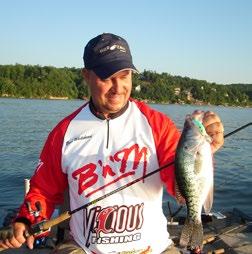
“I prefer the LEWS Slab Daddy S which is a lighter rod with enough back bone but very sensitive tip to let the fish load on it when it strikes. My reel preference is a LEWS 200 Series Speed Spin Light. This reel has a great drag system and small profile although it doesn’t hold a lot of line capacity With this trolling technique, I don’t need it,” he said.
Using jigs, usually 1/32 ounce to ¼ ounce in weight for long line trolling is standard procedure, and many crappie trollers will use a twojig set up to troll jigs of different colors which can help angler key in on the preferred color.
Crappie color preferences change often, and a hot color a week ago may be ignored by the bigger crappie on a later trip.
Crappie anglers long ago discovered that crappie don’t like smaller crank baits, they love them and will attack them eagerly at times.
“Crankbait trolling is the method I prefer to use in mid to late season when the crappie are more aggressive and apt to chase bait than they are in early season, “ Pitts explained. “With my crankbaits, I like to use a little heavier line. I prefer eight to ten pound Vicious line. I still like the high vis yellow because I can see what is going on, not only through my rod tip but also watching the line.”
Likewise with his rod selection for crankbait trolling, Pitts prefers a some what heavier rod set up.
“I like a little heavier rod with crankbaits. I use eight to ten footers. I still like a soft tip, but a little stiffer rod will help absorb the pressure of the dig with crankbaits,” Pitts shared.
And while the trolling technique for both jig and crankbait trolling are similar, there are a few differences.
“I really pay attention to bottom contours and structure with crankbaits. It’s harder to pull through structure with crankbaits and also watch the speed of the troll,” he said.
AN EXTRA TECHNIQUE- USE THE WIND
Many times, anglers and the wind don’t agree, and a strong wind can cause 877.314.1237
Crankbaits will produce a lot of crappie when anglers position the boat correctly
fishing problems. But sometimes, a wind on the water can be very effective in providing a quiet, no-cost means of trolling for crappie.
Nearly all boats will drift slowly when the wind blows, but some boats, kay aks in particular, are much more subject to wind movement. Crappie anglers can use a slow wind drifted boat to cover a lot of water to locate crappie when they are scattered in open water before or after spring spawn.
Using the wind is easy. Just position the boat upwind of the area to be fished and then let the wind move the boat slowly over the territory where the crappie are holding. Even in a strong wind, most boats won’t move too fast for a good, controlled troll.
The best rig for this kind of fishing is a double mini-jig set up. A couple of 1/32 ounce jigs with mini soft plastic bodies works very well in a wind drift. Let the jigs down to the desired depth, and then let the wind do the rest. Most of the time, little or no action needs to be given to the jigs.
And on those days when the crappie are being picky, a live minnow pinned to the jig and drifted this way can be deadly for tight-lipped crappie.
Most of the time for wind-drift trolling, anglers will want to let the motion of wind on the boat apply movement to the trolled lures or bait. Crappie seem to prefer a slow bait or lure that they don’t have to actively chase down to eat.

Ingredients
• 2 pounds crappie fillets
• 2 teaspoons lemon pepper
• 2 tablespoons mayonnaise

• Spray butter or olive oil
Side Dish
• 1 cup panko breadcrumbs
• 1 cup Parmigiano-Reggiano cheese freshly grated
• 3 cloves garlic minced
• 3 tablespoons fresh parsley finely chopped
• 3 tablespoons melted butter

• 2 tablespoons olive oil
• 1/2 teaspoon red pepper flakes
• Salt and cracked black pepper to taste
Instructions
1. Start by mixing the breading ingredients. Set the mixture aside.
2. Season both sides of the crappie with lemon pepper.
3. Use a grill brush to apply a light coating of mayo to the top of the crappie fillets.
4. Arrange the fillets on a parchment-lined cookie sheet sprayed with a thin layer of olive oil or butter. Spoon some of the breading mixture over each fillet, pressing it down with the back of the spoon so that it sticks. I shoot for about 1/4 inch of breading on each fillet. Spray the coated fish with a light layer of olive oil or spray butter.
5. Arrange the oven rack so that it is about 6 inches below the broiler. Once the oven is hot, place the pan under the broiler. Cook for 10 to 12 minutes, or until the breading is crisp and golden and the fish is just cooked through.

#6 or #7 shot in steel, bismuth, or tungsten will ensure duck breast in your plate, and a mount for your wall .

RT Channel explaining the history of a few of the many calls in his collection .

Native Americans used traps, animal skins dragged along the bank and floating decoys to entice ducks and geese close enough for their arrows. Likewise, the once abundant flocks of waterfowl around the globe led to innovative methods for supplying a duck or goose for dinner.
Europeans often used live decoys to draw swimming birds near enough for their early black powder shotguns in the early 1500s. However, these flocks also attracted commercial hunters who used large black powder weapons with bores measuring two inches and weighing 100 pounds or more. Because they were long and heavy, hunters cut notches in the bow or made mounts to secure the barrel to the front of their boat. Their preferred boat was a small flat-bottomed skiff called a punt.so they became “punt guns”.
One extreme example of a punt gun was a 14-foot-long creation called Irish Tom. It weighed 300 pounds and fired 50 ounces of lead shot using 10 ounces of black powder. Restored in the 1980s, it now resides at The British Association for Conservation and Shooting (BASC).
By the 1860s, shotgun cartridges consisted of a brass case, and within the next decade, several manufacturers offered the first paper shells. However, those hulls often developed pinholes where the black powder burned through the sides.
To protect the paper shotshell, manufacturers extended the brass base up the side of the paper hull above the powder level. As a result, shells with larger loads were made with a high brass base and shotshells for trap shooting, skeet, and small-game had a low brass base for the smaller powder volume.
Those early paper hulls also absorbed water and were later impregnated with wax to help make them water-resistant. Finally, in 1960, Remington introduced plastic cases which are still favored today.
The volume of modern smokeless powders used in today’s shotgun shells is much smaller than the equivalent amount of black powder, and low brass bases would be adequate for most modern shotshells. How ever, long-range shotshells continue to have a high brass base, mainly because of tradition.
The ban on using lead shot when hunting waterfowl began with the 1987-88 hunting season and became Federal law in 1991. Non-toxic shotshell pellets became mandatory when hunting ducks, geese (in cluding Brant), swans, and coots. US Fish & Wildlife regulations define “legal-shot” as any pellet that does not cause sickness and death when ingested by migratory birds.
Steel shot was the manufacturer’s first response to the new regulations and is still one of the most widely used materials today. The transition
to steel resulted in better uniformity, fewer outliers (wild flying pellets) and tighter patterns. However, the decreased density created issues with down-range pellet energy and the drop-off became apparent as the shooting distance increased.
Experimenting with various chokes, powder loads, and shot combina tions eventually gave shooters acceptable performance from steel to about 40 yards or a bit farther. Ultimately, several ammunition makers developed several innovative solutions as they searched for a better substitute for lead.
So, what are the latest and best solutions and what shot size works best with the newer pellets? Shot made from steel, bismuth, and tungsten currently dominate the shell market, along with copper, tin, zinc, nickel, and iron alloys.
Tungsten Super Shot (TSS) stands head and shoulders above other pellet choices because of its superior hardness and weight compared to lead. TSS is an alloy with 22% more density than regular tungsten and 50-60% more than lead.
For comparison, #9 TSS shot is equivalent to #4 steel in penetration. However, a three-inch #9 shell will hold over 600 TSS pellets compared to around 250 steel shots in a #4.
It does come with a premium price, and your shooting skills and hunting style will dictate whether it’s the right choice for you.
Target size, speed, distance, and budget are factors a hunter must con sider when choosing the correct shot size and powder load. However, testing your shotgun with a load combination is the only way to deter mine if that shell will deliver enough pellets in an acceptable pattern to intercept your feathered target for a clean kill.
Whether you use decoys, jump, or pass-shoot, every hunter can benefit from experimenting with different loads and chokes to find the best patterning shells for their guns.
If your choke/shell combination can put 90 to 100 pellets inside a 30inch circle, that’s enough to ensure vital hits on large ducks. You want to see 55 to 65 hits in that 30-inch circle for geese and about 130 for smaller ducks.
A reasonable distance to test your gun is 35-40 yards, but your average shot distance is where you need your best pattern. Weather and altitude can also affect your shot spread. If you test your gun at a lower elevation, but your hunt is at 5,000 feet, the thinner air can cause a tighter grouping. Also, the pattern will be more open if you’re hunting in single-digit temps but patterned it in 80-degree weather. 877.314.1237
I’m fortunate to know someone with over half a century of duck-chasing experience. RT Channel has hunted ducks and geese far and wide, taking almost every type of waterfowl, and he recently invited me to his cabin to discuss a few things he’s learned through decades of trial and error.
Channel allowed me to see firsthand a few of the tools he uses to provide waterfowl for his dinner plate and mounts for his wall. Though he’s used almost every type and gauge of shotgun for ducks and geese, he currently prefers a 28 gauge, through which he sends various sizes of hand-loaded pellets.

He reloads most of his shells and has done extensive testing with vari ous powder/pellet combinations to achieve patterns specific to the size and distance of the waterfowl he stalks.
We discussed the transition from lead to steel, and he stated that as manufacturers adopted their shell components, they realized they need ed increased speed for steel’s lighter weight. He said they perform ad mirably but that bismuth and tungsten can make clean kills with smaller pellets with better patterns at even greater distances. He procured a large volume of the original tungsten pellets with irregular symmetry because they provide better wound channels and added that each shell holds about 478 pellets when reloaded”.
According to Channel, not all barrel choke combinations perform the same. So he tried various brands and types of chokes until he found one that allowed his guns to perform well with almost any load. For example, Channel discovered a combination that placed 92% of his T-shot into a 30” circle at “60 yards and achieved good patterns with #7’s and #6’s.
He maintains steel is a good choice for near and distant targets, but the increased powder loads necessary to compensate for their lighter weight comes with a more brutal kick to one’s shoulders. On the other hand, bismuth is close to the density of lead, so smaller-sized shot pushed at slower speeds is an excellent substitute for steel, with 3040% less kick and more pellets per shot.
In addition, the newer hybrid bismuth loads have overcome issues of pellet fracture and are a better choice for older barrels and shoulders.
“But, for the ultimate lethal pellet swarm, tungsten has no rival, and you need extra penetration towards the season’s end when feathers have thickened from prolonged exposure to cold,” Channel said.
Smaller pellets usually provide excellent pattern density but can have insufficient energy to ensure adequate penetration at longer distances for clean kills. Likewise, if you use a shot larger than needed, you’ll have more than enough penetration but poor pattern density to ensure enough hits on your target.
That’s why understanding pellet energy differences between steel, bismuth, and tungsten is vital to making a good choice for various-sized targets at different distances.
Drawing waterfowl to decoys generally results in closer shooting, so a good choice for early-season Teal or Wood ducks would be a fast steel load in #6 or #7. However, the same size in bismuth or tungsten is more lethal for those longer shots.
For mallards, wigeons, or eiders, dropping down a size or two in steel is normal. So, steel in #4 or #2, bismuth in #6 or #4, tungsten in #6, or TSS in #7 will work. However, heavier loads perform better for those going away shots.
Many consider #2 steel the standard choice for geese in the early season, but others use BB and sometimes drop down to T-shot for high-fliers. Bismuth in #4 or #6 will bring down early-season geese, but TSS, up to #6 and sometimes even #7, also works.
So try a few choke-shell combinations and practice on a few clay pigeons. Testing your setup beforehand will give you more confidence when those decoys are in position- and the gray dawn outlines those dark whistling silhouettes.


It’s no secret that investing in land can be a smart financial move because property purchased today will likely increase in value over time. But were you aware that by implementing conservation practices on that land, such as building roads, using prescribed fires to restore native plant life, adding conservation easements, practicing regenera tive agriculture and managing wildlife can vastly increase the value of your land in a shorter amount of time?
Renowned whitetail biologist Grant Woods, Ph.D., recently sold a 1500-acre Missouri property he calls “The Proving Grounds” for a heavy profit through National Land Realty after turning the acreage that was once considered a biological desert full of invasive plant species, dying cattle and very few, unhealthy deer, into what many consider the best whitetail property in the state.
During the 21 years he owned the property, he and his wife, Tracy, not only raised their family there, but it is also where he built his whitetail hunting and habitat management brand GrowingDeer.
Early in their marriage, Woods and Tracy shared the dream of owning a large piece of land where they could hunt and raise their children. With a limited budget, Woods, a land management and habitat consul tant, knew he’d have to settle for less-than-ideal property that he could turn into good hunting land over time.
The couple stumbled across a suitable piece of land in the Missouri Ozarks that was owned by a hospital and made a low offer they could afford, but the hospital said no. A year later, it reached out to ask if the offer was still available.
“We didn’t have a tractor. All I had was a pair of boots and an overthe-shoulder broadcast spreader, but we purchased the land, and got to work on building a barn that is still here and is used as my office,” Woods said.
“After I purchased the land, I walked a lot to try and stay in shape. I didn’t have Google Earth, so I’d take my quad map and mark off a section as I walked it. That’s how I thoroughly learned the land that first year. During all that time, I only saw one deer because it was such poor land,” he noted.
While making the plan for regenerating his land, Woods did quite a bit of research to determine what native species originally grew on the property. He even went to the library to read the manuscripts written by
early explorers in the area.
“This one explorer talked about the grasslands, forbs and the red oak timber that grew in the area. He also wrote about how the native tribes would burn land to create balds to provide open pastures with native grasses for the wildlife. When the Europeans came, they stopped the use of fires, so there were no more balds. They introduced cattle to the land, which ate all of the native grass and forbs, but they didn’t eat the cedars. So, the area got covered up by cedars.”
Woods said he was also shown aerial photos of his ranch from the 1950s while visiting the USDA’s National Resources Conservation Service (NRCS) office.
“I was so shocked. At that time, it was a productive cattle ranch. When we purchased it, the open land was covered with eastern red cedar. It shaded out the ground so no cover or food could grow for the wildlife,” Woods pointed out.
Woods started cutting cedars. He also used prescribed fire to regen erate the native seedbank. That biological desert became the most productive habitat on the farm and some of the most productive native habitat in Missouri.
With a limited budget, Woods began making changes where he could and expanded the property as budget allowed.
“I started off by killing the invasive locust trees, which had taken over the property. I initially made the mistake of cutting them down. When you cut down locust trees, they send out root sprouts, which can be in the thousands. I made a mess of it. I learned you have to kill the trees with herbicide to stop the spread. I learned a lot throughout the land-improvement process,” Woods explained.
As the budget increased, Woods continued making progress on the property. The couple built their home on the northern end and began improving the property in a slow wave from north to south.
“I really enjoyed the process. I never really thought I was improving the property as an investment. I just wanted to improve the hunting opportunities on the land. We put so much energy into that property to make it better for hunting and more accessible. We planted more than 80 food plots and grated a road system for ease of use and to get our equipment around,” Woods said.
Although it was not his initial goal, those improvements made the land very desirable to buyers.


As Woods learned, there’s big money to be made through improving one’s land for wildlife and conservation, but the process isn’t cheap. However, a landowner’s costs can be offset with the help of grants offered by the National Resources Conservation Servie (NRCS) admin istered through the U.S. Department of Agriculture.
“There are many programs that can help landowners improve their properties for wildlife and conservation through the NRCS or state agencies. Usually, in most states, the NRCS and state agencies will combine their programs so that the money can go further for the land owner. The money typically comes in the form of a competitive grant that is given on priority based on what is going to be best for wildlife in the area. If you are the only guy in the neighborhood applying for the grant to make improvements, there’s a good chance you’ll get it,” Grant said.
If you are awarded the grant, the landowner typically pays the contrac tor, and once the work is inspected by the agency, you’ll get a refund. “The government offers these grants to help improve the habitat because it benefits everyone and it’s cheaper than buying land for a national park,” Woods added.
Woods says to successfully improve one’s land for wildlife and hunting purposes, it must become a life principle.
“On a Saturday, I have to make a decision. Do I sit on the couch and watch the football game or do I get out there and do some scouting
and habitat work?,” he said.
Still, Woods says he enjoys the process so much that he doesn’t really see it as work.
“I see it as several states of gratification. First, I got rid of those nasty locust trees. Then, after the prescribed fires, I got to watch the native species growing in. And the work and improvements are never done. Even after 20 years, the new owner will have a list of improvements to tackle,” Woods explained.
As Woods made improvements, the quality and numbers of deer began increasing. After five years, when he saw that there were more deer than quality groceries on the land, he began to hunt the property. All of his hard work had paid off.
“I learned that just because you own land doesn’t mean things are going to be easy. Improving your land and takes a lot of work. When I first purchased the land, I didn’t have staff. It was just me out there doing it. It was my responsibility. When you buy land, you’re a steward of a resource. You’re responsible for taking care of it.”
When it came time to sell his property, Woods decided to keep 900 acres, which are full of cedars and invasive species.
“I really enjoy the continued satisfaction of watching a property im prove. I’m still healthy and I have another good project in me. I decided I wanted to let someone else enjoy the land that I improved. I learned enough through my work on The Proving Grounds that I’ll be able to see some big differences on this 900-acre piece of land within three years,” Woods said.



So, you’ve received the special gift of a new baitcasting reel, but now you need a rod to go with it. That’ll be easy, just go to the rod store and pick one out, right? Then you get there and a walk down the aisle reveals a literal forest of rod selections. There are six foot rods, six and half foot rods, seven foot rods, the options just never end.
Oh yea, and then, there are different rod actions including medium, medium light, fast, extra fast and so on. Do you a want split or solid grip? How many and what size guides? You could always just pick one and “hope” for the best results, but man are they expensive... and the reel was a special gift, so you want everything to work properly. Here ‘s a little information from two rod nerds that hopefully will help you with that selection.
After deciding how much you want to spend, the first question you must ask is “What am I going to be doing with this rod and reel?” Slip corking with live bait, popping cork fishing, top water or Slick Lure fishing, grub fishing or all the above. We’ll get the easy answer out of the way first before we nerd out. If the answer is “all of the above”, pick a seven foot medium action rod with a minimum of nine guides and a tip. Be sure the guides are at least 6mm so any knot in the line can pass through freely. That rod will be “pretty good” for everything, but not great at any of them. Now if you really want to get specific about an application read on.
Length of the rod should probably be the first consideration. For inshore saltwater use, you’ll never need anything shorter than six and a half feet nor longer than seven and a half, so let’s keep the discussion in that range of lengths. The shorter the rod, the better the feel, or sensitivity whereas, the longer rod, will cast further as more tip speed can be generated. So, if your rod is going to be used as a grub rod, where feel is most important, stay with the shorter rod. If you’re going to be using it for popping cork or top water fishing where the bite is more visual and casting distance counts, go with a longer rod. If the rod is going to be used for top water or Slick Lure fishing, you may want to consider going to something in the seven foot two or three inch range. Here you’ll gain some casting distance but not totally give up feel. The strike on these types of lures is usually so pronounced it doesn’t require a lot of feel and the longer casts cover more water.
Next, let’s look at rod action. Rod action is heavy, medium or light with combinations of the three. Heavy action means stiffer whereas lighter action
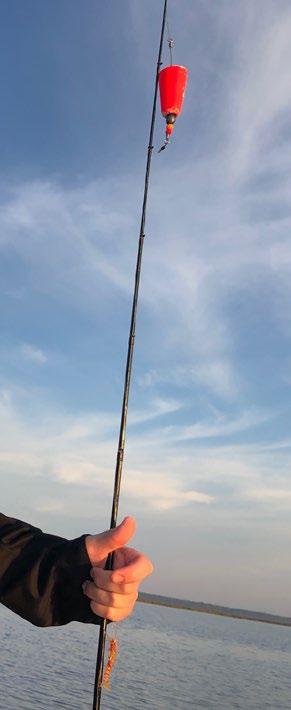
means flimsier. So, here again, these are the extremes. Neither heavy nor light actions have much use as an inshore saltwater rod, so we will limit the discussion to the medium action ranges. The heavier action side of the range will have the better feel and the lighter action work better for casting while sacrificing some sensitivity.
Adding to the discussion of action is rod tip “speed”. It is designed as extra fast, fast, medium fast, medium and so on. This refers to what takes place in the last third (towards the tip) of the rod. A fast tip is going to bend much more than a medium tip. Feel is lost with the fast tip, but casting distance improves. Also, the faster tip can compensate for a heavier action rod’s lack of “softness” when fighting a big trout, where concern would be pulling the hooks out.
If you’re not confused enough yet, continue reading as we’ll discuss the rod guides. Even the finest rod blank in the world won’t perform well if there are not the correct number of guides on the blank and they are spaced improperly. What is the correct amount? There is no magic number but, to answer simply, there needs to be enough guides to keep the line from touching or crossing the blank when the rod is loaded. The correct number of guides also need to be spaced properly to prevent this from happening. A custom rod builder will take care of this for you, but for a production rod, the obvious easy check is to put a reel with line on the rod and load the rod as there would be with a fish on it. Make sure the line never crosses or touches the blank when the rod is bent.

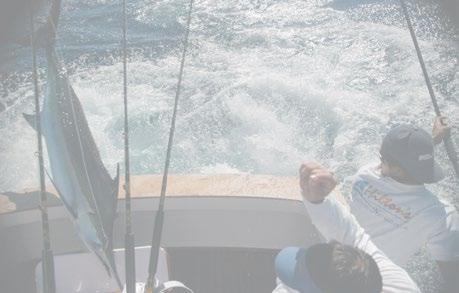
The number and size of the guide will also affect casting distance. When the line travels through the guides, the amount of “waviness” needs to be kept to minimum. The smoother the line travels, the less contact with the guide resulting in longer casts with less effort. Larger and fewer guides allow for less laminarity causing shorter casts. As mentioned previously though, if you’re going to be using a tied-on lead
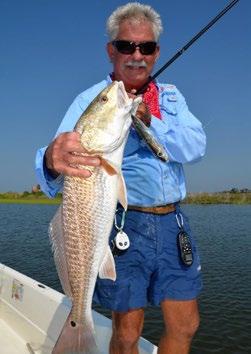

er or a slip cork, you’ll need guides that are large enough to allow for the knot to freely pass through the guides. You should be able to “eyeball” the guide size to know if your knot will pass freely through them. If you’re not using a leader, go with the smaller guides. Very generally speaking, as a summary, you’ll want at least 9 guides and a tip for a 7’ rod, maybe one less on a shorter rod, one or two more on a longer rod.






Lastly, let’s take a look at the rod handle design. There are two options, either split or solid. Split grips were new not too long ago, but now most manufacturers offer them on most rods. There are two advantages of a split over solid grip. First, the reel seat can be moved up or down the rod to affect the rod performance. By moving the seat closer to the butt, the casting distance will improve but some feel can be lost. By moving it closer to the tip, feel is im proved at the expense of some casting distance. If you’re going to be wading with your rod, the shorter butt will be handy as it will be easier to keep the butt out of the water. A longer distance from the butt to the reel will give you some support if you’re going to using a popping cork as the rod handle can be laid against your inner forearm for support. The other advantage to a split over a solid grip is that the split will be lighter as there won’t be as much handle material, bushing or glue in it as would be in a solid grip.
While all of this is important in your rod selection, the most valuable piece of information is how the rod feels in your hands. Keeping in mind that in a day of fishing you could be making hundreds of casts (and hopefully catching a fish on every one of them), You’ll want the rod to feel good and look good. So, make that your main consider ation and if you decide to use the provided tips, we sure hope your new rod and reel is one that you’ll enjoy for a long time!
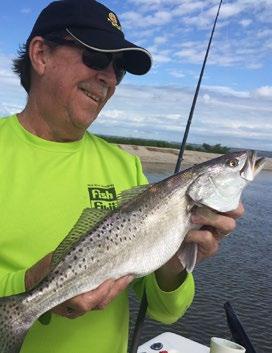
Tim Wood recommends planting clover for your spring crop to feed wild turkeys and to also feed turkeys and deer in the fall

Many of the crops you plant for spring turkeys also will be utilized by deer and turkeys the upcoming fall. For the best information on what crops to plant for turkeys – when and why - “Great Days Outdoors” has interviewed Tim Wood, the general manager of the Central Alabama Farmers Cooper ative in Selma (https://www.alafarm.com/business/central-alabama-farm ers-cooperative). Wood, on the Alabama Wildlife Federation’s Board of Directors, is a strong supporter of wildlife conservation, habitat enhancement and growing more turkeys and deer each year.
Great Days Outdoors: December is when many hunting clubs and land owners consider what crops they’ll plant for spring and fall turkey hunting and the upcoming deer season. What crops do you recommend to meet these objectives?
Tim Wood: Some of the crops you’ve planted primarily for deer this past fall will be used by turkeys in the spring, once those deer plantings mature. One of turkeys’ favorite foods for spring and fall is clover. If you’ve planted clover food plots for deer last fall, that same clover will help feed your turkeys during the spring and the fall of 2023, as well as continue to feed the deer. Clovers like crimson, Osceola, Ladino and red are beneficial, depending on your property’s type of soil.
For instance, if your soil is composed of heavy clay, Osceola and Ladino clovers will do well. For sandy soils, I like crimson clover. However, I don’t recommend Yuchi Arrowleaf clover, although it produces plenty of growth and tonnage. Its stems become woody-like and thick. Turkeys don’t tend to pick and eat this clover as well as they do others. Turkeys like to feed on the fringes of green fields, not out in their middles. Yuchi clover is great for cattle farmers though because the cattle eat that clover and keep it from becoming too thick.
For wildlife, I’m not a major advocate of Arrowleaf clovers. If you mow this clover and keep it low to the ground, it can be a good food for wildlife, but that comes at the expense of having to do more maintenance. The other types of clover I’ve recommended require less maintenance.
GDO: What are some other benefits of planting clovers?
Wood: Clovers can be year-round food for wildlife – both deer and turkeys -
and produce plenty of supplemental food. Clover also is a perennial and will return year after year, without your having to replant it. However, you must keep up with the fertility level of your soil by doing soil tests once or twice a year.
GDO: What’s the advantage of planting annual crops for turkeys as well as perennial crops?
Wood: Perennials require more management than annuals do, such as additional weed and grass control. Some people who plant perennial crops of clovers plow them up every year and replant, but that’s not necessary.
GDO: When should you spray clover patches to control the weeds and grasses that compete with the clover for water and nutrition in the soil? Also, how long should these clovers last?
Wood: Select Herbicide and Poast Herbicide are herbicides that work best on clover patches. I recommend you spray a herbicide in early March to kill all the grasses that invade your clover patches. Your clover will produce more, and the herbicide will encourage your clover to spread faster, reseed more and set great stolon groups (roots that grow under the ground on which clover spreads). The more stolon growth, the more survivability your clover will have and a longer growing season. The Ladino clover has some of the best stolon growth, so it stays green longer into the summer. For a longer season to feed both turkeys and deer, I recommend planting perennials, because they produce more palatable food than the annuals do for turkeys and deer in the spring and the summer.
In my opinion, you can’t plant a better crop to feed turkeys in the spring and fall, as well as feed deer, than clover. I like any of the Ladino clovers. You can spray Select Herbicide in early March too, although that’s not neces sary. If I spray Ladino clovers in the fall, I’ll spray in August or September to control the weeds. But I prefer to bush hog Ladino clovers in the early fall for both turkeys and deer to have the best results.
GDO: How can someone learn the best information on what to plant for turkeys in the spring and in the fall, and what herbicides to use in a specific section of the state? Should you talk to people at your local Farmers Co-Op?
Wood: Yes, you should. However, if you want to do everything possible to increase the food and habitat on the land you’re managing for wildlife, I
Tim Wood says that you can’t plant a better crop to feed turkeys in the spring and fall, as well as feed deer, than clover .
suggest you contact the Alabama Department of Conservation, the Alabama Wildlife Federation and/or the National Wild Turkey Federation. Each of those organizations provides consulting wildlife biologists, free of charge, to recommend a course of action, including planting, fertilizing, liming and spraying herbicides for your food plots to benefit wildlife. They’ll recommend how to create the best nesting habitat for turkeys and poults and explain oth er things you can do to increase the habitat and the food for turkeys during the spring, summer and fall.


GDO: Earlier you mentioned that many of the crops planted for deer also will be productive for turkeys. Which crops are those?
Wood: If you plant cereal grains like oats, wheat and rye for deer, the tur keys can peck at these and get some nutrition when the crops head-out and start producing seeds. Turkeys will strip the mature seeds off the seed heads of each of these crops, producing a great amount of protein in the spring for them. After the turkey poults have hatched, these crops’ stems and stalks provide protection from avian predators as the poults bug and move through these cereal grains. However, if these crops are planted too thickly, the veg etation will be difficult for the poults to utilize. Any of the grazing wheats or grazing oats will produce what you need to help mature turkeys and poults.
Grain sorghum will mature in the early fall. If you don’t harvest that grain sorghum, the turkeys can feed on it during the winter and the spring. People who plant corn and leave it standing without harvesting it will provide food for turkeys. The ground under the corn stalks is usually clean, making it suitable for poult habitat. As the corn stalks fall down, if not harvested, turkeys can eat the corn and feed on it during the winter. Poults also can pick bugs under the corn after they hatch. One of the concerns however with planting corn is that it can produce Alphatoxins (toxic chemicals produced by some forms of fungus) that have caused issues with some turkey populations.
If you think about providing food and habitat for turkeys in the fall when you do spring planting, you’ll help to increase the numbers of turkeys

GDO: What other crops can be planted that will feed turkeys in the spring and the fall?
Wood: Many dove-hunting enthusiasts’ plant brown top millet and grain sorghum. If those crops are left standing in the field, and some of it is cut, not only will the doves feed on these plants, but also the turkeys during the fall and winter when the standing sorghum and/ or millet falls over and puts seeds on the ground the turkeys can eat. Soybeans left standing in the fields will feed turkeys too in the late fall and early winter. All the crops I’ve mentioned for planting for the fall turkey season need to be left standing throughout the winter to provide food for turkeys when the stems die and fall over, leaving the seeds accessible to the turkeys.
GDO: Is there anything else we can do to increase the food avail ability and the habitat for turkeys during the spring and fall seasons?

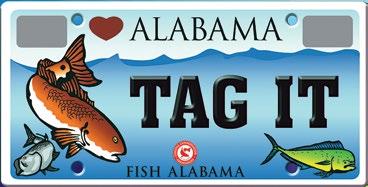
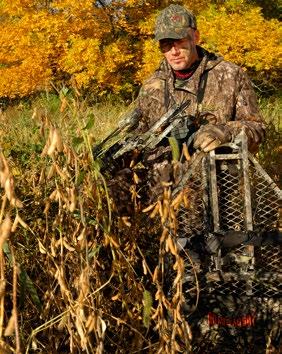
Wood: Once again, I’m convinced that having a consulting wildlife biologist who’s totally impartial to any particular type of planting come in and evaluate the property you have to hunt is very import ant. The wildlife biologist can recommend what’s best to do on your land, and what to plant and where to plant it to increase the numbers of turkeys. A biologist also can suggest doing soil tests that will provide the information for liming, fertilizing and planting the crops to produce the most food and habitat for turkeys during the year.
Any place where the sun hits the ground, you can disc up that ground and sprinkle 13-13-13 fertilizer on it to enable the native seeds stored-up in the soil to germinate and produce additional wildlife food for turkeys and deer. If your property is being managed for timber, the loading decks that are used to load timber when it’s cut are often productive places to create this type of natural native food for turkeys and deer too.

In my opinion, the perfect food plot for fall and winter is to disc-up the ground just past the drip line of the trees on the edges of your green field, let native grasses grow up there to provide habitat for turkeys to nest in and to raise their poults and have a standing crop of cereal grains or corn for protection from avian predators like hawks and owls. Later crops, like clover and/or others, also will help feed the deer. As turkeys move further out into your food plot, the clover there will be free of weeds. Both mature turkeys and poults can peck on the clover and eat it. Here’s a schedule of how to have the ideal food plot.
* Have a wildlife biologist evaluate your property. Each green field has a different personality. Perhaps it’s wet with big hardwoods surrounding it; close to agricultural fields; or, located on the edge of a mountain and subject to drought.
* Inform the biologist of the primary use of the property –to raise agriculture, timber and/or wildlife. A biologist may recommend you control burn 20 acres at a time in various sections of your land to clean-up the forest floor’s litter and allow more sunlight to reach the forest floor to stim ulate the growth of native grasses and plants that turkeys and deer will eat.
* Plow and disc the edges of green fields, away from the dripline of the trees, to encourage native grasses to grow and provide nesting areas for hens and protection for young poults. Since trees will suck-out nutrients and moisture from your soil, I like a 20-foot buffer zone from the field’s edges to the trees’ dripline.
* Plant grain, sorghum, wheat and/or oats for two or three rows next to the buffer zone, and leave this crop standing to fold over and make grain available for the poults and hens.
* Plant green fields, including: winter food plots for deer; clover for year-round food plots for deer and turkeys; and spring grains like browntop millet, corn and milo. Wild game likes diversity of habitat.
* Remove predators like skunks, coyotes, foxes, rac coons, wild pigs, possums and bobcats that will eat turkey eggs (skunks), poults and sometimes fawns by trapping and harvesting these animals each year.
* Realize that although chufas are a great crop for turkeys, chufas attract wild hogs and raccoons that will destroy the chufas.

* Alabama Department of Conservation and Natural Resources - Wild life and Freshwater Fisheries www.facebook.com/alabamawildlifeandfreshwaterfisheries/
* Alabama Farmers Co-Ops Website: www.alafarm.com/ Facebook: www.facebook.com/alafarm/ Locations: www.alafarm.com/locations
* Alabama Wildlife Federation www.alabamawildlife.org/
* Central Alabama Farmers Cooperative in Selma, Ala Website: www.alafarm.com/business/central-alabama-farmers-cooperative Phone: 334-874-9083
* National Wild Turkey Federation www.nwtf.org/
* Poast Herbicide www.forestrydistributing.com/poast-herbicide-basf
 BY WILLIAM KENDY
BY WILLIAM KENDY
Let’s face it, most meat eaters love big juicy (rare for me) steaks. Who doesn’t love to see their favorite sports team win a game against their biggest rival or even better, a championship. Most straight guys love women with large…personalities and every true bass fisherman loves to catch really big bass.
If you own a pond, chances are that you want to grow the biggest bass you can with the resources you have, but the question is how do you do that? It isn’t a matter of just throwing some bass in along with a bunch of forage fish in a pond and expect to have a trophy bass paradise overnight. It takes planning, work and time.
To get the real skinny on what to do we reached out to Norman Latona, founder and CEO of Southeastern Pond Management.

SEPond, headquartered in Birmington, Alabama with satellite offices in Auburn, Al, Canton, MS and Jackson, TN offers a complete range of pond services ranging from pond construction and improvement, stocking, liming, fertilizing, and getting ponds up to speed from a professional management and implication perspective.
Latona points out that for a large number of SEPond customers (if not the majority) the ultimate objective is to grow really big bass and he and his team spend a lot of time implanting management steps geared towards making that happen.
First things first. Latona defines a “trophy bass” to be a fish greater than 20 inches in total length and those fish can weigh from seven to eight pounds and up. The SEPond management philosophy is that three major components have to be present to allow a pond to be a trophy bass factory. Those components are age, nutrition and genetics and they all need to work hand in hand if a pond is going to produce trophy bass.
Fact…it is impossible to produce trophy bass without the age component. Bass, regardless of the forage and genetic aspects, don’t go from fry to three-pound bass in a year. Depending on the pond environment, nutrition variables and genetics, it may take three years and more for a bass to grow to the trophy range. That is with an ideal environment.
“At the end of the day it takes some age, which means time, to produce trophy bass and you can’t do it overnight,” Latona said. “Once those fish get to that 16–17-inch range they have the potential to become real trophies and you want to protect them with practices such as catch and release and maybe even supplemental feeding.”
“Nutrition is the one component that has the greatest direct impact on trophy fish production and is the easiest one of the three for us to utilize,” Latona said. “We can analyze what kind of food is available, how abundant it is, what are the sizes and diversity of the forage base then take steps to enhance that forage
“The more we increase and enhance the food availability, we increase the growth rate of the bass and decrease the time required to attain trophy status. That is where we spend most of our time and effort since that is where we can have the greatest effect,” he pointed out.
Building a self-sustainable forage base doesn’t just mean adding more forage fish into the mix. The quality of the water, the amount of nutrients to feed those forage fish in order for them to grow to become a good mouthful for a voracious bass is a matter of keeping everything in sync. That isn’t an easy task considering all of the variables.
“If we can create better water quality, a more fertile environment, with adequate phytoplankton development, we can stimulate more forage production, which translates ultimately into more food for the bass that are swimming around that we’re trying to grow,” Latona explained. “So, all these inputs, whether it’s lambing, fertilizing, supplemental feeding, supplemental stocking and other management tools, all these inputs contribute to producing a greater amount of forage, which ultimately enhances the bass’s ability to grow and become true trophies.”
If the fish have the opportunity to age, have optimal nutrition then the last component that comes into play is genetics. Does that fish geneti cally have the ability to grow into trophy size?



Latona pointed out that there presently is a lot of research being con ducted on fish genetics and with an emphasis on selective breeding in order to produce fish that exhibit high and rapid growth rates, the ability to reach maximum sizes and display aggressive behavior and other


traits.

“The magic in growing trophy bass is the ability to combine all three of these components working in concert to constantly produce trophy bass,” Latona said.
Once a pond has been developed and” tweaked” to be in the trophy bass producing category, it becomes a matter of keeping all of the components in balance. This is more of a challenge than it may seem on the surface.

The reality is that each pond is different and conditions change from year to year and can rapidly change if the composition of the pond and resultant output.
For example, one year you may see a natural increase in the number of bass fry which results in heavier pressure on the forage base and if that isn’t handled by increased bass harvesting a pond can become “bass predator” crowded very quickly which will result in a decrease in the size of the bass. That defeats the whole purpose of taking steps to increase trophy bass output.

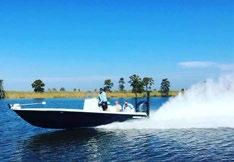
“If you don’t stay on top of that condition, it will quickly end up with a bass crowded condition and it impacts the whole lake, the forage avail able for the bass, the competition among them and it can set back your efforts to grow that wall mountable trophy bass,” Latona said.

“It is highly valuable to have a management company and a fish biologist to come out on an annual basis and look at the fish community, both predator and forage and make a ‘snapshot in time” and give an assess ment as to where we are today, relative to where we were 12 months
ago and here is where we need to make adjustments, Latona said. That way there is no guesswork. We can do some electroshocking and weigh, measure and count them and give educated advice as to what needs to be done, if anything, to get the pond to an even keel.”
The bottom line on all of the process is is that it is relatively simple in concept but complicated and challenging to implement. There has to be enough food for the bass to eat to grow to trophy size. That means forage fish. The forage fish need to be plentiful but of the right size to fit into a bass’s mouth. The bass population has to be kept “in check” so they don’t, borrowing a term from the deer hunting community, “over brose the range”. If the bass multiply too much, the population has to be reduced. Trying to do this with hook and line is almost impossible and the only viable alternative is electroshocking, which is beneficial in that it allows you to decide what fish to harvest and which to return to the water and provides information at the same time.
Contact Information
Norman Latona Southeastern Pond Management www.SEPond.com 205-288-1371



Admiral Oysters are now available for retail by the dozen at Bon Secour Fisheries, Inc. in Bon Secour, Alabama. Fresh, raw oysters can elevate any event. From a simple, nutrient dense appetizer at home to a shucking party with friends, Admiral Oysters will steal the show. Call 251.949.7411 for pricing and availability

Oysters grown at our farm are consistent in size and flavor profile. Frequent handling and wave energy at our unique location creates a sustain able environment in which our oysters thrive. This combination results in the perfect half shell presentation of the Admiral Oyster.
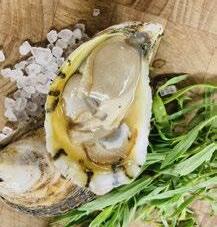
Our grass fed and hormone free Bison meat is a healthy alternative to beef with less fat, calories and cholesterol. Call 205-296-0072 for reservations, prices and to create a lifelong memory.
Raising trophy bass is all about balance and continuous vigilance and commitment. 877.314.1237
We are located near Fort Morgan AL, in an untouched wild stretch of beach that will be immune from develop ment. The site has witnessed centuries of history includ ing the Battle of Mobile Bay as Admiral Farragut charged into the Bay with the iconic line “Damn the torpedoes, full speed ahead”. That motto comes in handy on cold rainy mornings and when the winds get high!
Visit Us at AdmiralShellfishCompany.com

Crocodile Bay boasts the largest privately owned sportfishing fleet in Central and South America
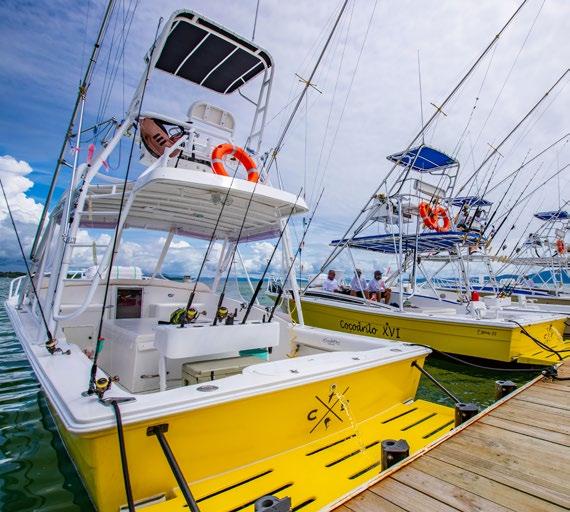
Did you know one of the top sportfishing destinations in the world is just a short plane trip away? Costa Rica, which actually means “Rich Coasts,” lives up to its name with an abundance of “rich” fishing opportunities for the angling enthusiast. The rugged, rainforest-cov ered Central American country boasts coastlines on the Caribbean and Pacific, an abundance of wetlands, and numerous rivers loaded with hundreds of species of sport fish to choose from and year-round opportunities to catch them.
In addition to fishing, the beautiful tropical destination offers a ton of outdoor activities, such as surfing, horseback riding, hiking, snorkel ing, paddleboarding, climbing volcanoes, swimming in waterfalls and exploring the jungles, making it an ideal vacation spot for the family members who don’t care about wetting a line.
So, what makes Costa Rica such a rich fishing destination?
“To put it simply, location, location, location. On Costa Rica’s Pacific side is a convergence of different currents that run up from the South American continent, past Central America. As it gets toward Pana ma, it moves inland. The nutrient-rich currents feed larger fish and bait fish closer to land. We also get great rainfall during the green season. We have mountainous terrain, so the debris rushes through tributaries and rivers down the mountains and out into the Pacific, which gives us flotsam and jetsam to provide shade and comfort for breeding baitfish,” says Mark Carlson with Crocodile Bay Sportfish ing and Eco Resort.
Crocodile Bay, a “go-to” destination for fisherman, boasts the largest privately owned sportfishing fleet in Central and South America and the new Botánika luxury accommodations with amenities that center around its unparalleled access to the rainforest. Those who book a vacation package with Crocodile Bay can enjoy an array of eco-ad ventures as well as the premier fishing from Crocodile Bay Marina.
With so many great fishing opportunities, it can be difficult to figure out how to plan that one perfect fishing trip, but no worries. Carlson explained that Costa Rica has a welcoming infrastructure and the country is built on tourism. That means the travel industry is very accommodating to visitors, which is a big plus when it comes to planning your trip.
Yet, before you can take advantage of Costa Rica’s welcoming travel industry, Carlson said you first need to determine what type of fish you want to catch.
A deep-sea trip can include marlin, sailfish, roosterfish and more. An inshore trip can result in Wahoo, snappers, grouper, mahi-mahi, tuna and more. The freshwater rivers and lakes yield rainbow trout, bass, mojarra, bluegill and many additional types of freshwater species.
“If you just want to catch a lot of fish, then the summer months, from June through September, offer the best opportunity for all species, both inshore and offshore. Those who want to specifically target dol phin, yellowfin tuna, mahi, blue marlin and black marlin, may want to fish during the winter months from late November through February,” Carlson said.
When it comes to selecting the best charter fishing outfit, he said it pays off to do your research.
“Crocodile Bay has the largest privately owned fishing fleet in Costa Rica. We own all 20 boats and the captains are employed by us, so they’re not competing against each other. Lot of people offer inde

pendent charter fishing trips, which means they search for the best fishing of the day independently. We, as a group of captains, help each other. If one captain gets on a big ball of bait and the tuna is crashing, he lets the other captains know and everyone goes there. That’s the benefit of being part of a resort crew,” Carlson said.
Justin DeBoom, fishing specialist and travel consultant for Costa Rican Vacations, helps anglers from all over plan their dream Costa Rica fishing vacation.
“Costa Rica is the billfish capital of the world for a number of rea sons, including that it offers easy access to prime fishing grounds. The Continental Shelf holds billfish and it’s only 45 minutes to an hour to those prime fishing grounds, versus two to three hours at other locations. Our seas are not subject to storms, so they are flat and calm, and we enjoy a temperate climate, which means the yearround weather is great,” DeBoom said.
Another benefit to the visiting anglers is, no matter when you visit Costa Rica, you’ll always have fishing opportunities.
“There’s always something to catch. Our seasons differ between regions. December through April, you can enjoy peak bill fishing in the central and south Pacific region, then the northern coast gets good from May through October,” DeBoom explained.
DeBoom advised that when planning your fishing trip, your first step should be to determine your priority.
“Is the lodging and destination your priority or is sportfishing the main focus? If fishing is your primary focus, then we’ll want to build your trip around that. If you are wanting to simply enjoy some family time in Costa Rica and just fit a day of fishing into your itinerary, we’ll have a different strategy,” DeBoom said.
He felt that when it comes to planning your fishing trip, the biggest mistake people often make is not asking the right questions of the experts who are there to help
“If you don’t take an expert’s advice, you can get stuck in the wrong location at the wrong time of year for the fish you want to catch. If you want to focus on catching a specific type of fish, then talk to experts like us who can help put you in the correct location during the best time of year to catch that species,” DeBoom said.
Depending on your goals, you have many options to choose from. First off you need to determine how many days you want to spend in Costa Rica and how many days you want to actually fish. Those are your two biggest factors. Of course, budget matters as well.
“Remember that fishing trips are expensive anywhere you go. But one way to get the cost down is by bringing more people. The num ber of people fishing will impact the cost per person. Most charter boats can take four fishermen out at a time, so groups of four will give you the best individual price. All charters are private, so if you go by yourself, you’re paying that full price. To get your overall prices down, try to split the big-ticket items like charter boat rentals and lodging. Most lodging is based on double occupancy, so it’s a good idea to split a room with another person if you can,” DeBoom said.
Prices range greatly, but DeBoom said an individual who is part of a group of four that plans to fish for three days and stay in a four-star
resort can expect to pay at least in the $2000-$2,500 range, but that price can change dramatically based on preferences and desires.
DeBoom said it’s a good idea to plan your trip as soon as you decide you want to go.
“Availability on the best boats and the most desired lodging is limited and space runs out quickly, so the further in advance you can plan, the better. The best boats book up well in advance for the peak season and peak area. For example, January through March of 2023 is already sold out. So, start planning six months out if you can. Starting early grants you more access to preferred boats and lodging, lower lodging rates and early booking bonus es,” DeBoom pointed out.

So, if you’ve ever wanted to give fishing in Costa Rica a try, start planning now for that trip of a lifetime. With abundant fishing opportunities, a variety of outdoor activities, a beautiful, lush tropical environment and luxury lodging opportunities, Costa Rica is the perfect choice for your sportfishing destination.
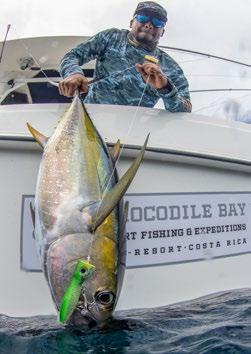
Mark D. Carlson
Crocodile Bay mcarlson@crocodilebay.com 305-803-5657
Justin DeBoom
Fishing Specialist and Travel Consultant
Costa Rican Vacations justindeboom@namutravel.com
US 1-800-606-1860 x 1242 Vacationscostarica.com
son said. “Hunters’ purchases of hunting equipment also helps
If you want to catch a lot of fish, but aren’t specific about type, the summer months may be best
Alabama Ag Credit is affiliated with the over 100-year-old nationwide Farm Credit System and is a stockholder owned cooperative. That means that when someone obtains a loan with Alabama Ag Credit they become a stockholder of the association and a portion of those earnings is returned to them through the AGC patronage program, as determined by their board of directors.
At closing you make a one-time Alabama Ag Credit stock purchase and that stock ownership entitles you to share in the co-op profits, lowering your loan’s total interest cost. When your loan is paid off, the cost of the stock is refunded to you.
In other words, when you borrow from Alabama Ag Credit, you become a stockholder and part owner in the cooperative, entitling you to a portion of the earnings (patronage) when the association does well financially The more you borrow, the bigger your share of earnings.
Alabama Ag Credit doesn’t sell its loans on the secondary market like a lot of other financial institutions. When you have a 20-year loan with Alabama Ag Credit, it owns your loan for 20 years and that loan stays with them.
As part of the farm credit system one of AAC’s missions is to service ru ral Alabama and provide financing for people who want to buy acreage, be it 20 acres for a homestead or more acreage. While it specializes in financing rural and farm land they can finance a residence as long as it is outside of city limits and meets other Farm Credit System require ments.
One of Alabama Ag Credits popular financial products is their 20-year fixed rate loan with a 15% down payment. For rural homesites, the standard is a 15 year loan with 15% down.

At AAC, the terms of a land and rural residential loan, such as interest rate and down payment, depend on the applicant’s unique underwriting factors and a number of components, including credit, financials, loanto-value, the type of property, the length of term, the market conditions and other factors.
One of the things that differentiates Alabama Ag Credit is that they have a complete sheath of services which makes life easier for the customer and ensures a shorter buying and closing process. For example, one of those benefits that AAC offers is that it has its own appraisal department, which results in a shorter turn-around time for the whole transaction and is also economical.
Alabama Ag Credit is headquartered in Montgomery and has nine offices across the state.
Alabama Ag Credit Land Finance Rates (11/10/22)
AAC has terms up to 30 years with rates between 7.75% to 9.5% depending on the fixed rate period.
Contact: www .AlabamaAgCredit .com 800-579-5471

Grilling lobster tails is a thing in Florida and Southern California, where the spiny lobster lives, and it is indeed a fun way to cook them in hot weather. The grill adds that element of smoke, and you can baste the lobster with that melted butter if you want. Or you can go with any number of other flavors, like olive oil, or sesame oil, or salsa, or ponzu sauce, or chimichurri or . . . you get the point.
This is more of a method than a recipe. There are a lot of ways to prep a lobster tail for grilling, but the easiest way I’ve found is to use shears to cut the shell on the top of the tail back to the fins. By doing this, you will likely cut the tail meat too, and that’s OK, because you’re going to open the tail like a book to grill it. You want the bottom of the shell intact; doing this, as opposed to cutting the tails in half completely, allows the shell to protect the meat somewhat. I will also use my fingers to work the raw meat away from the shell a little, which will make it easier to remove later.

Get your grill hot. This is a hot and fast cook, not slow and low. Clean the grates.
Paint the lobster meat with oil or melted butter and set, meat-side down, on the grates. Press the tail down with your tongs or a spatula for about 30 seconds. Grill the meat side for about 4 or 5 minutes, then turn. Paint the meat with more melted butter or oil.
Grill the shell side for another 5 or 6 minutes, then remove. Add more seasonings of your choice; I go with an herb butter, but a single chipotle from a can of chipotles in adobo, puréed with melted butter or olive oil, is another great option.
This method will work with any bison steak, or really any other sort of steak: beef, venison, mutton, etc.
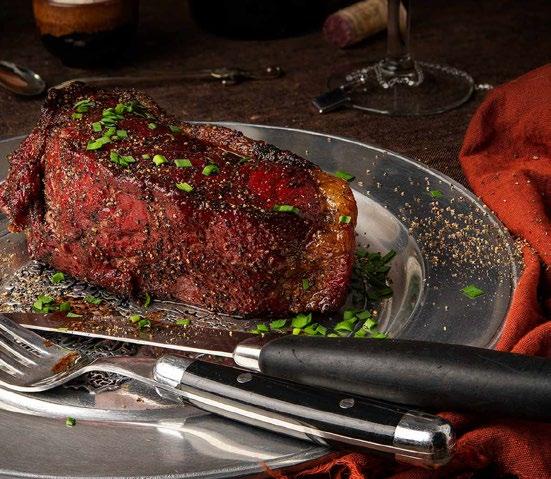
Prep: 5 mins • Cook: 2 hours •Total: 2 hours 5 mins
Ingredients
• 2 pounds bison steaks, or more for big eaters
• Salt
• 4 tablespoons unsalted butter (optional)
• Freshly ground black pepper
• 4 tablespoons minced chives (optional)
1. Salt the steaks well. I often will salt them all very lightly a day or three beforehand, leaving them in a covered container in the fridge. This acts as a sort of cure and gets the salt all the way into the center of the meat. But at minimum, salt all sides of each steak 1 hour before you start.
2. Preheat a smoker or oven to about 200°F to 250°F. When I have all the time in the world, I keep the temperature lower
because it gives the meat more time in the smoke. If I am using an oven, I will go as high as 275°F because as long as you are under about 300°F, there is no advantage in this case to slowing down the initial cooking. Pat the steaks dry with paper towels and put them on a cooling rack set over a baking sheet. Set this in the oven.
3. Cook the steaks until the internal temperature hits about 120°F, if you want them to ultimately be medium-rare. Lower this by 10 degrees for rare, increase by 10 degrees for medium. Use a probe thermometer to determine internal temperature.
4. Remove the steaks from the oven or smoker. Turn the oven off and return the rack and sheet pan to the oven. Get a pan hot, then add 1 tablespoon of butter per steak — usually you will only be able to sear one or two steaks at a time, so you may need to sear in batches. Sear both sides of the steak over high heat just until browned, only about 1 or 2 minutes per side. Move the finished steaks to the cooling rack in the oven while you do the others.
5. To finish, set the steaks on plates, pour the butter from the pan over them all, then grind black pepper over them. Sprinkle with chives and serve.
The Cottonwood NXT Jacket features a high pile sherpa fleece exterior that’s ultraquiet and water resistant. Along with a wind/water-resistant mid-layer and high pile “teddybear” fleece interior it is warm enough for those cold late-season hunts. It features a contoured offset zipper, a “kangaroo” pocket, gusseted underarms for unrestricted movement, range finder pocket, a windproof membrane bonded to sherpa-lined fabric, a safety harness port and more.

Suggested Retail Price: $200.00 www .nomadoutdoor .com
Boasting a generous 5,250 cubic-inch capacity, the top-load Commander Pack Bag system incorporates a draw-string closure main compartment, four rugged zippered external pockets for items such as spotting scopes, med kits, lights and other It includes a rugged zippered lower door. It sports an adjustable strong yet lightweight aluminum frame, thickly padded shoulder pads, an adjustable waist band and is constructed of durable ripstop fabric.

Suggested Retail Price: $299.00 www .alpsoutdooz .com .
The FieldEarz™ electronic earpieces help you better hear soft sounds, protects you from loud sound all with the ability to carry on conversations. It integrates effective and seamless impulse and continuous noise reduction along with the latest compression architecture for processing speech and environmental sounds. New voice alerts, improved wind reduction, adaptive feedback cancellation, adjustable volume control, and five selectable listening programs provide unparalleled usability and performance.

Suggested Retail Price: $995.00 www wildear com


Sized to hold two scoped rifles or a combination of long arms up to 50.5 inches long, this case is molded of high-impact plastic and features thick egg-crate foam for protection and a structured clamshell design for enhanced rigidity. It features four snap latches with strategically placed padlock holes for up to four padlocks. It sports piano-style lid hinges and tie-down groves.
Suggested Retail Price: $67.65 www .mtmcase-gard .com
This skinning and gutting knife combines a gut-hook with a thicker blade heel to enhance the ease of full-cavity evisceration and is designed with a gradual decrease in thickness from heel to tip to create the dual purpose of segmenting sternums in skinning. It has an ergonomic lightweight handle with finger grooves and top and bottom guards. It features a 4.6-inch Powder D blade and weighs 8.3 ounces.
Suggested Retail Price: $149.99 www .templarKnife .com
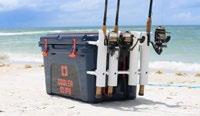
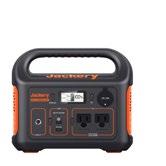
The Jackery Explorer 300 is a compact and portable multiple port 293-watt power station that can power small appliances and multiple devices. It is quickly recharged to 80% in two hours by a 90-watt wall charger and 60-watt USB-C PD charger or via a solar panel, car or generator. It features 2 pure Sine Wave AC outlets and a USB port.
Suggested Retail Price: $299.99 www jackery com

The 1305 utilizes integrated Vortex gas piston technology linked with a precision-rifled German steel to attain velocities of up to 590 feet per second for top performance. It has the Hatsan Quattro 2-stage adjustable match trigger, an adjustable Monte Carlo cheekpiece and a microadjustable rear sight and a red fiber optic front sight and is available in a scoped model.
Suggested Retail Price (rifle only): $239.99 www . hatsanairgunsusa .com
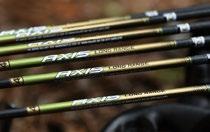
The 4MM AXIS Long Range uses a lighter weight carbon resulting in more speed and deeper broadhead penetration as the shaft passes through with less friction behind the broadhead channel. It offers 4 MM nocks and Includes 8-32-point half-outs. It is available in four sizes, 250, 300, 340 and 400 in both standard straightness and in the ultraprecise ±.001 Match Grade.
Suggested Retail Price: $149.00-$224.00 www .eastonarchery .com
The cooler clips attach on any cooler that fits the CoolerClips (a clip that connects to your cooler for attaching accessories, which includes Yeti, Stanley, Igloo, Coleman, Walmart Ozark Brand and more including soft coolers. The small holds two rods each and utilizes the small “c” CoolerClip. The four Rod Holder utilizes the Large “C” clip for the larger coolers.

Suggested Retail Price: $59.00 www .coolerclips .com 877.314.1237
This 500 Lumen rechargeable lantern has high-efficiency LED technology to allow customization of colors to match your environment’s natural light. It runs for five hours on high and 200 on low. It has a 6400 mAh rechargeable battery and offers both ambient and task-based light. With a IPX4 rating it can withstand rain and splashing and has a USB port for out-charging devices. Available in a 250 Lumen model.
Suggested Retail Price: $79.95 www .bioliteenergy .com


When it comes to Christmas shopping, I have a hard time finding items for my friends who love the outdoors that they don’t already have. Hunters, anglers and outdoors enthusiasts grab each new product as soon as it comes on the market.

With that in mind, let’s look at some unique gifts the Alabama Department of Conservation and Natural Resources (ADCNR) offers.
Although a significant outlay at first, lifetime licenses for hunting and fishing are really a bargain for young people in the family. Once you’ve purchased a lifetime license for that family member, it is not affected by the price of licenses in the future. It also remains valid if the family member moves out of state.
Lifetime licenses can be purchased using several methods. If you’re buying the lifetime license for a minor (under 18) who does not have a valid Alabama driver’s license
or for an Alabama resident possessing an Alabama Non-Driver’s ID card, you will need to provide proof of residency before the purchase. You will take this information to your county probate/license commissioner’s office, select Wildlife and Freshwater Fisheries (WFF) locations, or our Marine Resources Division offices at Dauphin Island or Gulf Shores.
If you’re buying for someone with a valid Alabama driver’s license, you can also go to other local license agents or visit www. outdooralabama.com/license-information and click on the Purchasing a Lifetime License link to determine what is needed to purchase the license. You can also call 888-848-6887 (additional charges apply).
When it comes to an outdoors experience, it’s hard to beat a trip to Alabama State Parks’ beautiful and diverse properties. Our top-rated State Parks system provides opportunities to enjoy nature and peaceful
FROM THE



surroundings from the Appalachian foothills to the Gulf of Mexico.
A great Christmas gift would be an Alabama State Parks gift card, which can now be purchased online at www.reservealapark.com/ AlabamaWebHome/Giftcards/Giftcard.aspx. The Parks gift cards also can be purchased onsite at most of our 21 State Parks. The cards are available for any amount from $10 to $1,000 and can be used at State Parks campgrounds, for cabins and lodge rooms (excluding those at Gulf State Park), at gift shops, and to rent boats, canoes and kayaks at Alabama State Parks.
Hiking and biking enthusiasts in the family will appreciate the Dirt Pass offered by Alabama State Parks. The Dirt Pass Trail Crew membership is a commitment to the improvement and expansion of the many hiking and biking trails in our State Parks. The $35 annual donation for the Dirt Pass membership is made online at www.alapark.com/trails/dirtpass-trail-crew-program.
Be sure to visit www.alapark.com for more information on our beautiful Alabama State Parks.
Meanwhile, I hope you’ve heard the great news regarding hunting accidents during the 2021-2022 season. For the first time since 1973, when WFF started tracking hunting-related accidents, no fatalities occurred during last year’s seasons for the multiple species pursued in Alabama.
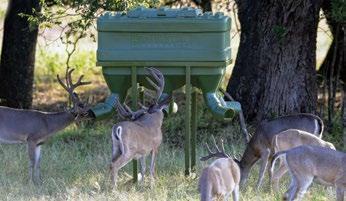
As is often said, we don’t want to rest on our laurels. We must continue to be diligent about hunter safety, both for firearms and treestands. Captain Marisa Futral, WFF Hunter Education Coordinator, and her team have made significant progress with the treestand safety campaign with only five treestand accidents reported last season. One
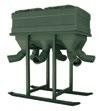
reason for fewer accidents is hunters are adhering to the rule that they remain attached to the tree while ascending and descending, when the majority of falls occur.

To keep hunters tethered to the tree at all times, two Alabama-based companies offer products that solve the problem. Hunter Safety Systems’ Lifeline easily attaches to the tree and allows the hunter to slowly descend if he or she should slip. Also, Summit Treestands has its Safety Line that keeps hunters safe when using a treestand.

As well as the safety lines, make sure you use a quality safety harness that will stop a fall and allow you to descend to the ground safely.
As most of you know, I grew up on Alabama’s beautiful Gulf Coast, and Christmas wouldn’t be complete without a pot full of seafood gumbo or dining on wild-caught Alabama seafood. I’m planning to grab some fresh Alabama seafood from Bon Secour Fisheries, Skinner’s, Billy’s Seafood or other seafood markets. I’ll probably also purchase some gift cards to great seafood restaurants like Dauphin’s, Blue Gill or Hummingbird Way for family and friends. Getting Alabama seafood, whether from a market or one of the fine restaurants, is always an appreciated gift.
After eating all the holiday treats, we are all going to need some exercise. Be sure to join in on a 1st Day Hike on January 1 at one of our beautiful Alabama State Parks or many other outdoor sites around the state. What a great way to start the new year!
Alabama has so much to offer during the Christmas season, whether hunting, fishing or just enjoying a great restaurant serving fresh Alabama Gulf seafood. Be sure to take advantage of that this holiday season.
.
BY CHARLES “CHUCK” SYKES Director of the Alabama Division of Wildlife and Freshwater Fisheries (WFF)
Since the inception of the Alabama Adult Mentored Hunting Program (AMHP), the Department of Conservation and Natural Resources Wildlife and Freshwater Fisheries Division (WFF) has hosted more than 1000 adults on their first hunts. This was a very novel idea when the program was created in 2017. For decades, hunters had been told, “Take a kid hunting; it’s the future of the sport.” Guess what? “Take a kid hunting” didn’t work! Hunter numbers have been on the decline for at least 20 years.
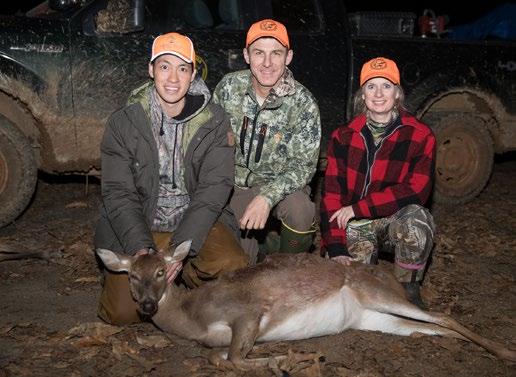
Since the definition of insanity is to continue to do the same thing while expecting a different outcome, we decided to go against the system and try something new. We figured if we teach adults who have an interest in hunting and fishing how to become successful, they will teach their children, family, and friends. After several years of implementation, it’s evident this new
method is working exceptionally well.
I realize this is a hard concept for many diehard hunters to accept because they have only known the “take a kid hunting” model. But, think about it this way. We at WFF must run our organization like a business. Since we do not receive general tax fund monies, it is imperative that we generate our own revenue, and we must have a good return on our investment to carry out the WFF mission of protecting and enhancing our state’s natural resources for the people of Alabama.
The average age of our participants in the AMHP is 42. They have jobs and the ability to decide what activities they want to spend their time and money pursuing. And yes, many of them are parents. So, if we teach them how to hunt, they can “take a kid hunting” by teaching their own kids how to hunt, and this will actually make a difference!
Mentors are desperately needed to help guide the newest generation of late-onset hunters
We have created a successful model to help increase the number of hunters and supporters of conservation who contribute to the funding model for wildlife conservation and management in Alabama. However, we can’t turn this ship around alone. We need the assistance of everyone who enjoys the outdoors. That is why we have partnered with Buckmasters to create the Share the Hunt Alabama program.


Share the Hunt is a joint effort between Buckmasters and the Alabama Department of Conservation and Natural Resources to grow hunter numbers and hunting awareness throughout the state. We’re encouraging every deer hunter to host someone new this fall, and, as our way of saying thank you, every hunting mentor will receive a Buckmasters subscription and thousands of dollars in discount codes for some great hunting gear.
This program began November 19 and, at the end of the promotion January 18, one mentor will be chosen as the Alabama Mentor of the Year and will win a deer hunt with Jackie Bushman, possibly to be aired on the Buckmasters TV show (hey, it’s a free-range Alabama deer hunt; we can’t make too many promises).





All participants must be 19 years old or older to participate, including the new hunters. A new hunter, or mentee, is defined as any adult who has not purchased a hunting license in the past three years. Mentors are required to submit social media photos of their hunt, along with a brief description of the experience to be eligible for the rewards and to be considered for the Mentor of the Year.
I want to encourage you to take the time to take a new adult hunting this year. Speaking from experience, I guarantee it will be one of the most rewarding things you will do this season. Here are a few tips I’d like to give all prospective mentors before you take new adults hunting.

1. Remember, even though they are adults, they have basically zero knowledge of hunting and the outdoors. Their knowledge will be aligned with the kids you’ve taken in the past. So, you must treat them accordingly. It takes a lot of guts for adults to admit they know little or nothing about a topic and ask for assistance. Don’t blow the opportunity to be a good example.
2. Don’t worry about trying to explain the tradition or the thrill of the hunt to them. They have no tradition. It wasn’t taught to them by a parent or grandparent, and they don’t really care about the thrill of the chase or the satisfaction that comes from outsmarting an old buck or turkey. This was very hard for me. But I’ve come to understand that almost 100% of these late-onset hunters are in it for one thing and one thing only-- food.
3. These adult hunters are striving to do something that we all have been doing since we were kids: providing cage-free, 100% antibiotic and hormone-free organic protein for the table. We were doing it long before it became fashionable to do so. Again, focus on the FOOD
4. Because they are in it for the food, they aren’t interested in shooting a buck that you’ve been watching for the past three years. A big fat doe equally satisfies their desires and should help you with your antlerless management goals. So, take time to show them how to take it from the field to the table. Proper skinning, butchering, packaging, and cooking are all things they will be very interested in learning.
For more information on the Alabama Adult Mentored Hunting Program, visit www.outdooralabama.com, and for information and the complete rules to the Share the Hunt program, visit www.buckmasters.com/Share-the-Hunt. Take someone new to the woods this fall. Share the outdoors. Share the passion. Share the satisfaction and share the excitement. Most of all, Share the Hunt!
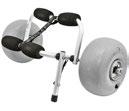 BY ED MASHBURN
BY ED MASHBURN
 Photos by Ed Mashburn
Photos by Ed Mashburn
It’s getting to be that time of year for all good kayak anglers is there any other kind?, to start thinking about what sort of Christmas presents should be under the tree.
For those folks who live with a kayak angler, it can be hard to figure out what sort of stuff that kayak angler needs. We’re here to offer some help for both sides of this problem. Here are some ideas for products that just about all kayak anglers would welcome and use for those fishing trips.


There are few things which make a kayak angler’s life more pleasant than a good hat. A hat gives a kayak angler protection from the sun and also provides a


degree of protection from biting insects. One of my favorite and best tested fishing hats can be ordered online from All About the Bait Store. The Boonie Fishing Hat gives great protection, is very light weight, and fits nearly all heads out there. For $12.00, this is a hard to beat headpiece for kayak anglers.
For those kayak anglers who need to see what’s going on in the water, and that’s all kayak anglers, a good pair of polarized sunglasses is a great aid to seeing. Bajio Sunglasses is a great brand of polarized sunglasses, and this company offers a wide range of styles, colors, and degrees of light reduction to fit any kayak angler’s needs.
For cool weather kayak angling, there is nothing
which promotes an angler’s comfort more than a pair of thick, wool socks. Wool, even when wet, provides a good degree of insulation which can keep feet warm and anglers on the water. The best thing about buying wood-based socks is that every big box store carries a selection of wool based socks, and the price is low. For no more than $20.000, a kayak angler’s feet can stay warm in the coolest of winter kayak fishing conditions.
Kayak anglers face a number of problems when it comes to keeping live bait alive and frisky for fishing. Most kayaks have limited space for all gear, and bait wells which work fine for larger power boats are just hard to use on a kayak

The Rite-Hite Fisherman’s Bait Fillet Cooler is a multi-function live bait system as well as a cooler for drinks and food. This product will fit on the deck of most fishing kayaks, and its two-speed aerator will keep live bait lively for a long time. At $54.99, it’s more expensive than old-time bait buckets, but it does a lot more than old bait buckets, and it does its different chores well..
Kayak anglers tend to catch big fish. That’s good, but when a big fish, especially a big saltwater fish which has big, sharp teeth comes along, a kayak angler can be at a real disadvantage. Landing nets tend to be bulky, hard to store and very hard to access when needed. A good alternative is the one-handed Bearclaw by Frabill. This very sturdy net folds up to take up small space yet unfolds with one hand and is used by one hand to handle even large fish. This landing net at $99.99 is not cheap, but it works very well for kayak anglers’ needs.
There’s many a slip between the truck and launch area for kayak anglers. Moving a kayak over dry land is tough, especially for a solo angler. A good means to get the kayak from the truck to the water is needed. The Wheeleez Kayak Cart Mini at $145.00 is a good way to ease the burden of getting the ‘yak to the water. This carrier fits onto most kayak decks and the 24 cm polyurethan
big soft beach wheels are rated for kayaks up to 121 pounds. If a heavier cart is needed, Wheeleez offers a wide range of kayak carts to transport almost any size of fishing kayak.
A good paddle is one of those things that kayak anglers, at least those who don’t have a pedal-powered fishing kayak, need badly. A poorly made, poorly designed paddle is a quick source of misery, and lots of kayak anglers are stuck with bad paddles.

Although there are a number of good kayak paddles out there, the Angler Classic Snap-button adjustable paddle is a proven winner. At $159.99, it’s a moderately priced quality paddle with features such as hook retrieval system, built-in fish measuring scale, and it can be obtained in either orange or sage green. This is a good paddle for years of service.
 BY CHRIS VECSEY
BY CHRIS VECSEY
It’s the year’s end and plenty of opportunity to end it with some bent rods. Passing fronts will keep fish on the move and time on the water is the best way to stay on top of them.
December can be tough with weather, but MS has no shortage of sheltered waters, providing cover from the wind.
This is prime time for sheepshead. These expert bait thieves will be stacked along bulkheads, piers and all significant inshore structures.
Live bait is generally best and fiddler crabs are the top choice although shrimp and hermit crab will

work in a pinch.
Sheeps can be found near the surface along structure or deep in the bottoms of pilings and rip-rap. Fishing different depths by using slip float setups can pay off big on suspended sheepshead.
In the upper bayous and creeks, speckled trout will be the main focus, although redfish, flounder and the occasional striped bass will come into play.
Look for areas with decent current flow and the presence of bait. Finding bait is everything in the winter. If you find the bait, you’ll find the trout.
Once you’ve found a “fishy” area, soft plastic like
Slick Lure and Matrix Shad, and fast sinking twitch baits like the Mirrolure MR18 will work well for locating fish.
Live baits like croaker and shrimp will also do very well and should be fished at different depths in these areas.
Warmer days may see some topwater action on shallower flats adjacent to river/creek mouths and along drops near channel edges.
It’s time to go “low and slow” in Alabama’s inshore waters this month. When water temps dip into the low 60s (or lower), it’s time to hit the rivers. Dog, Fowl and Fish rivers along with the Theodore Industrial Canal are timetested spots for hot winter action.
Finding bait and slowing your retrieve rate will find success. If you think you’re working lures too slow, slow down even more.
Soft plastics are the go-to for most. Styles vary from straight/split tail “jerk” baits like the Slick Lure or Zoom Fluke, to paddle and curltail grubs. Many still use the time-tested “Sparkle Beetle” from H&H. Weight and jighead sizes for these plastics depends on the depth and current but 1/8-3/8 ounce is a good range to keep on hand to make on-the-water adjustments.
Other proven winter lures are hard-body jerkbaits like the Yo Zuri 3DB and twitchbaits like the Mirrolure MR17 and Berkley Stick Shad
Regardless of lure choice, baits should be fished slow and with long pauses between twitches or action from the rod.
Live bait will certainly produce as well although it makes covering water a slower process. Generally, covering water with lures helps locate fish quicker.
Surf action will still be consistent with whiting, reds, drum and pompano mixed in. When water temps climb into the mid 60s between fronts, Pompano can be quite reliable even into January.
Small, peeled pieces of shrimp, ghost shrimp and sand fleas (when available) will produce well. Finding washouts and other areas with good current and deeper troughs will put fish on the sand.
Offshore jaunts ll be hampered by weather, but it’s well worth getting out when the seas calm. Grouper fishing is usually very good in December and the cool temps make bottom fishing more comfortable. Bigger fish are often caught in shallower water this time of year, but it’s still best to focus on depths of 150ft or more.
Tuna fishing can be red hot around the oil/gas platforms, but knowing when to go involves monitoring the water temps and current patterns. Following satellite imaging services like Hilton’s Realtime-Navigator can help pick the right area to fish.
Besides tuna, swordfish and wahoo are two reliable targets through the month. Wahoo will hang around platforms in 350-700 feet along the shelf and can be taken in several ways but live baiting and pulling deep diving plugs is usually best.
Big redfish will still be a mainstay for inshore anglers along panhandle beaches and pensacola bay. Surface action can point the way, but many times the fish will be subsurface where you’ll need to use your depth finder to locate fish. Big reds also love to hang around bridges and jetties inshore.
Reds will take a variety of artificial lures, flies and natural baits. Most lures that imitate menhaden or mullet will work.
Sheepshead will be abundant on the same structures as reds. Using both dropshot and carolina style rigs around bulkheads and bridge pilings is best. Baits should be fiddler crabs or live shrimp.
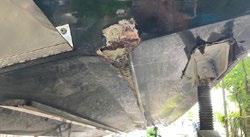
The beachfront will be active with redfish, pompano and whiting. If bait schools are plentiful, bonito and others may come in close enough to take from the beach as well.
Offshore, this may be the best time of year to target nearshore natural bottom areas in depths of 75-130ft.
Vermilion and mangrove snapper, almaco jacks, gag grouper and even scamp, can be caught in these areas through the cooler months. Both live and dead baits will produce as well as bucktail and slow-pitch style jigs.
The Okaloosa county Fish Aggregating Devices (FADs will have potential through December if water conditions are favorable for pelagics. Subscribe to Hiltonsoffshore.com to stay on top of current water conditions offshore.
Tunas will be the greatest possibilities around the FADs, but the occasional billfish or mahi mahi will be around if warmer currents bring mid 70 degree water into range.

 BY DAVID THORNTON
Photos by David Thornton
BY DAVID THORNTON
Photos by David Thornton
Autumn may be counting down on the calendar this month, but relatively mild weather may continue well into December as the Gulf of Mexico cools off in stair step fashion. On average the coastal Gulf water temperatures are around 70 degrees in early December, but cool to below 65 degrees by the time we ring in the New Year. The shallow back bays and surfzone are often five degrees or more, cooler than that.
This is but one of the factors affecting fish movements and feeding activity that anglers should consider when choosing when and where to fish. We can also experience some fierce coastal storms this time of year, as
increasingly colder continental air clashes with the relatively warmer, moister air over the Gulf. The results may lead to several days of increasing winds and seas resulting in roiled water as the storm or front approaches. Several days of strong northerly winds usually follow the front until the wind abates, finally allowing sediments in the water to settle before the next front approaches.
This is also the part of the year with the shortest amount of daylight hours which inhibit the sun’s ability to help water temps recover. Plus we are subject to three NEAP tide periods this month, on the 2nd, 16th, and 30th. Otherwise expect to see the typical winter tide pattern of low water in the mid to
Once anglers can identify a pattern of when and where the target species are feeding they can greatly increase their odds of success .
late morning hours, and a rising tide through the afternoon into evening. This consistency can actually aid from shore anglers who like to sleep in, or avoid the early morning chill. The stronger incoming tides may actually raise the water temperature five degrees or so through the afternoon, leading to a spark of fish feeding activity near the beach in the last few hours of the day. Not that mornings are never productive, but rather the cooler water affects the metabolism of cold-blooded fish and may inhibit their feeding. Each species has its own range of temperature tolerance and preference. And once anglers can identify a pattern of when and where the target species are feeding, they can greatly increase their odds of success.
Late fall and early winter fishing falls into three or four basic target species.
The most popular by far, is the set rig contingent seeking pompano from the beach. Double dropper pompano rigs cast on long rods, baited with fresh shrimp and/or Fishbites are most widely used and often productive. Still, there are times when circumstances conspire to put pompano out of reach, or they simply are not feeding. That’s when the versatility and imagination of the individual angler can provide them unique opportunities not realized by most other anglers.
Long ago I asked, “Why reproduce failure when other anglers are unproductive doing the same thing in the same place while there are other species, methods and venues to explore?” If you are in a “good spot” it may just be a matter of time until the tide turns and the fish turn on. Or it may be a matter of trying in close or changing rigs to target other species like kingfish (“whiting” and “ground mullet” or croakers). Angler networking’ is a great way to increase your awareness and experience, even if it is just to rule out unproductive waters or times.
This is the time of year when using ghost shrimp may greatly increase your odds of being successful although where, when and how you present them to the fish can make a big difference. Try to take some time to scout around after each storm event for alternative venues as the sandbars will be constantly changing location and depth. This will help pinpoint spots that may be more productive for fishing or bait gathering as your previous hole plays out.
Meanwhile some anglers are intent on “trophy fishing” even from shore this time of year. They are looking to do battle with sharks, “bull” redfish or large black drum and utilize heavy tackle (20 to 30 pound plus) in doing so. The waits between bites are often lengthy, but the payoff is in catching that one big fish after putting in time and effort. Some locations, like passes, tend to be more productive because of the access to deeper water and stronger tidal movement. Still the nuances of understanding the bottom layout, tides, currents and other conditions coupled with tackle, tactics, and bait selection are critical keys to success.

Sheepshead is another targeted species growing in popularity every winter. They are most often fished near hard structure (piers, jetties or seawalls) with live shrimp on medium or medium heavy tackle in the 10 to 20 pound class. They are scrappy fighters for their size, usually weighing two to five pounds but specimens of six to even eight pounds or more are not uncommon. Regardless of their size they all taste quite delicious either baked, broiled or fried. Though my favorite is to pan saute the fillets in just a little olive oil with a dash of Cavender’s Greek Seasonings. Mmmm!
Sheepshead have great eyesight and will often refuse an offering simply because the terminal tackle is too heavy for their liking but they may bite other invertebrate offerings such as fiddler crabs, ghost shrimp, hermit
crabs, and oysters (out of the shell). Just keep varying the presentation until you find what they will eat.
The alternative to these natural bait targets is to try for the limited variety of species available with artificials. Lures are most often used to target Little Tunny, called “bonita” on the Panhandle piers. These small, fast members of the tuna family are great sport on light or medium spinning tackle (6 to 12 pound class). They will hit a variety of leadhead jigs or small plugs like the number 8 or 10 Rapala X-rap. The “color of the day” varies depending on sky and water conditions like the amount of sunlight and water clarity. They seem to bite best in overcast or foggy conditions and least on bright sunny days.
Bluefish are another species that tolerate the cooler water and respond well to lures in varying conditions. They will even strike topwater plugs on occasion, though more are caught on silver spoons especially in the surf. Flounder are again in season during December, though most have moved farther offshore as their spawning time approaches. Flounder can be successfully targeted at times along dock fronts in the back bays, gulf front piers, and along rock jetties near the passes into the Gulf. Killifish like “bull minnows” or small mullet are traditionally used to target flounder but they respond well to a variety of soft bodied grubs and swimbaits fished near the bottom too. A leadhead jig heavy enough to sink to the bottom in whatever conditions, with one or two of these soft baits is a great way to cover a lot of water and get the attention of hungry flounder.
So, despite having shorter daylight hours, fewer targets (species) of opportunity, and limited weather windows to work with, from shore anglers still have plenty of options to explore as they spend their great days outdoors!
are again available to anglers in December 877.314.1237
This good bass came over a deep grass bed .

“In December, most fishermen work the creeks. When strong wind and low water conditions are present, small creeks offer good protection and lots of fish,” says veteran guide and tournament angler Captain Wayne Miller.
Miller told us that around the Causeway and lower parts of the Delta, by the end of December the bulk of the bass have moved into the creeks adjacent to the big bays and main rivers, and they will stay in the creeks until warm weather comes in the spring.
Anglers can find numbers of bass in the creeks especially after strong tides from cold fronts push much of the water out of the Delta and into Mobile Bay. The low water conditions concentrate the bass in the deeper creeks.
Miller advises anglers in December to look for deeper water with some sort of wood cover for the bass to hold close to.
Crankbaits, spinnerbaits and soft plastics will work well on December Delta bass. Shad colors such as chrome with blue back, chrome with black back and crawfish patterns will all work well now. Delta bass feed on crawfish year-round, and December is no exception.
“In most Decembers, we start to make the winter transition. Bass will bite on Rat’L Traps, jigs, and jerk baits. Look in three to seven feet of water along old grass lines, creek channels, and the bass can be stacked up on bends in creeks. Look for any kind of pinch point where the water drops in depth and some current might be present,” says long time Lake Guntersville guide Captain Jake Davis.
In general, for bass anglers on Guntersville, if you find the shad, you’ll find the bass.
Davis advised anglers that this time of year, it’s not a break of day bite for largemouth bass and it is ok to sleep in, start the trip about 8:00, and fish into the afternoon.
Crappie anglers will have good results working around bridges with minnows and small jigs, and the crappie will be following schools of smaller shad around the shadow lines of the bridges.
White bass and stripers will be in open water, and they can be located by looking for schools of shad on electronic gear and dropping jigs, silver spoons, and other deep running lures to them.
Randy Jackson of Riverside Fly Shop pointed out that December on Sipsey Fork will see some good trout for anglers who go about the fishing in the right way.
There will be periodic hatches of midges and blue wing olive mayflies, and anglers will have to adjust their fishing to suit the weather and water conditions. Midges will tend to hatch all up and down the river, but the blue wing olives will be found hatching off in specific locations, and anglers will have to find these spots.
Flies in smaller sizes, usually size 18, will work best.
Anglers who prefer spinning gear will have good results using a light bubble float rig with the same flies that fly rod anglers use tied on a very light leader below the weighted bubble float. This allows long
casts to reach trout feeding some distance away from the angler. Trout Magnet trout jigs in various colors will also work well for the spinning gear folks.
Riverside Fly Shop will continue to offer float trips and guided wade trips for anglers who want to experience the only cold-water fishery in Alabama.
Trout will be stocked each month, and the fish in December will be very active .
Captain Lee Pitts has been successfully hooking up fishermen with bass and crappie on Weiss Lake for years said angler’s should try fishing deep lake ledges using bottom bouncing rigs with a sinker on the end of the line and a hook with minnow a couple of feet above the sinker.
Crappie chasers will have to move and look to find spots where the best concentrations of crappie will be holding. A good thing about this time of year, when the crappie are found, there will be a lot of them. Anglers can fill a live well with big, fat crappie when they are located.
In fact, some really big crappie that have been feeding heavily on shad are caught in December on Weiss.
Bass anglers on Weiss should look around river channels and deeper holes on the channels. Bass can still be found in shallow water if the shad are in shallow water. Pitts says, “Spinnerbaits are good for shal low water bass now. Try spinners with gold blades in winter here.”
Look for humps and rises out in the main parts of the lake. In the low water winter draw-down conditions, these spots are easier to find than when the lake is at full pool in summer. Lots of spots will be holding on these rises and humps, and crank baits will work well, especially when there’s a current in the lake from dam releases of water.
Striper and white bass will be schooled up in open water chasing shad, and silver spoons will work well on the stripers and whites.
If the weather turns cold, anglers on big old Lake Eufaula can find good bass by working ledges and humps out in the main lake body. Work jigs and soft plastics over the humps.
On the deeper ledges of the main lake, crappie will be schooling up looking for shad. Anglers catch a lot of crappie on Eufaula using multirod spider rigs. Try jigs tipped with minnows and slow troll likely spots.
Captain Sam Williams from Hawks Fishing Guide Service tells anglers coming to Eufaula for the good winter bass fishing to look for any remaining cover left over from summer and fall. Blowdown trees in the water are good places to find winter bass, and the flats that hold leftover lily pad stems can be quite good. The stems won’t look like much, but they will hold good numbers of crawfish, and the bass will be up in the shallower water looking for the mudbugs.
When the weather is too cool for shallow water bites, anglers can try fishing the rip-rap on bridges and causeways for bass. Concentrate on the sunny side of the structure where the water will usually be just a little bit warmer than the shady side.
Williams said thart the early morning topwater bite can still be good on warmer days- try working frogs and other soft plastics over the lily pad stems.
On the deeper ledges of the main lake, crappie will be schooling up looking for shad. Anglers catch a lot of crappie on Eufaula using multirod spider rigs. Try jigs tipped with minnows and slow troll likely spots.
In December on Miller’s Ferry the cooler weather has dropped water temperatures enough that the fish have moved off shallow water spots of fall and gone into their winter areas.
Joe Dunn from Dunn’s Sports recommends that visiting anglers look for ledges that fall into deeper water out in the main body of the lake. Water 18 feet or so right on the edge of the break is a good place to find concentrations of crappie.
Try bottom bouncing minnows or 1/8 ounce jigs right on the break.
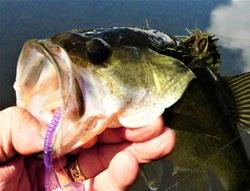
If the weather turns really chilly, the crappie may move off even farther and hold in 25 feet of water.
If Miller’s Ferry should have high, muddy water from heavy upstream rains, the crappie will look for quiet holding water behind points and other structures that will break the stronger currents that move through the lake. When this happens, anglers can have some fast action as the crappie will be in really big schools.
Dunn pointed out that from mid to late October and through December, the crappie will be on the deeper breaks where they’ll be chasing shad. When the lake is pulling water and there’s a current, the crappie will be closer to cover, and they will be very aggressive and strike harder.
In December, Miller’s Ferry largemouth will be pre-spawn staging in ten to twelve feet of water just waiting for temperatures to warm enough to actually into spawning mode. At this time, they’ll move into shallow water if it is warm enough to suit them.
If the weather in December stays cool, the bass will be deeper.
Bass anglers should look in the bigger, deeper sloughs, and look for shad. If shad are there, the bass will be there, too.
Chatterbaits, and crank baits that run to six to eight feet of water will work well over ledges in the sloughs.
“It’s big catfish time. The big cats will move off into the deep ledges of the river channel in Wilson Lake. They’ll start to school in December,
and that means anglers can get into multiple really big cats now,” says Captain Brian Barton from BrianBartonOutdoors.
Cut skipjack herring, cut shad, live bream or shad are all good baits for the big old catfish.
Anglers should look from Shoal Creek downstream to the dam for big cats. This is prime trophy cat water in December. Jackson Island is also a good spot to find the biggest cats.
For eating size cats, anglers should fish the bottom of straight wall bluffs. Points and ledges are good holding areas for the eating size cats.
Now, for some really hot fishing that will make anglers sweat even in cool weather, it’s hard to beat the big smallmouth bass and striped bass fishing below the dams, especially Wheeler Dam tailrace.
“Both smallmouth bass and stripers will be staging in the tailrace gorging on yearling shad. Anglers who drift current seams and outside edges of the current with live shad if you can get them will have some fast action,” Barton said.
December is typically a good month for trophy catfish on Wilson Lake. Best bet for big fish is large chunks of cut skipjack tossed over stand ing timber in 55-80 feet of water. Either make long casts with no weight or fish straight down over the tops of trees with a Carolina rig with a two to three ounce sinker. Be patient, often cold water cats will take 30 to 45 minutes to bite. Smaller catfish can be caught with the same methods, just downsize the hook and bait.
Crappie is a top pick for December on Wilson and Pickwick Lakes. Look for blowdowns for standing timber in 25 to 40 feet of water. Wood cover along creek ledges and main lake shorelines are best. Cast 1/8 or 1/16 ounce jigs and grubs in black, chartreuse, or pink for best results. For live bait anglers like myself, drop live minnows right over the tops of trees. Use a light wire Tru-turn hook so you can bend it out easily when you become snagged in the wood cover.
Pickwick Lake smallmouth bass and crappie are top picks. For bass, search rock piles, dikes, and channel ledges with rock cover. The area from Riverfront Park in Sheffield to Natchez Trace Parkway will be a top spot. Buck Island and Pride Landing areas will likely produce most trophy fish this month. Small plastics, hair jigs, grubs, and live shad minnows will be the best option.
Bear Creek, Indian Creek, and Yellow Creek will be the best crappie locations. Depending on weather conditions and water temperatures, fish will locate from 10 to 30 feet of water. Use electronics to find schools of fish then target them by casting or trolling lures through the area. Crappie will usually appear as an “upside down Christmas tree” on your electronics.
“The primary target of most anglers on Talquin in December will be speckled perch. Most Decembers the perch fishing will have picked up, and anglers can find big slab speckled perch in the mouths of creeks and on humps in the main body of the lake,” said long-time resident and angler Jeff DuBree of Whippoorwill Lodge.
Trolling jigs is a very reliable and productive method of catching the Talquin slabs in winter situations.
Soft plastics are always a good way to catch winter bass
Bass anglers will need to check the recent weather when planning a December trip to Talquin. If the weather has been cold, then most bass will be found on deep ledges where they will take Carolina rigged finesse lures.
If the weather has been generally warm, then the bass will still be shallow.
DuBree pointed out that as December moves on toward the end of the month, some very big bass will be caught in eight to twelve feet of water on Texas rig worms and Rat-L-Traps as the big old bass feed up for the spring spawn.
Rob Baker, kayak fishing guide and long time Forgotten Coast angler, gave us some good advice for fishing Lake Jackson, but this advice applies to all of the other lakes in the Tallahassee area.
He said that anglers will want to slow their presentations down quite a bit if the weather turns chilly. The vegetation in the lake will be thinning out in December, but what’s left is where anglers will want to spend their time working. Both old lily pads and shoreline cover will be good places to find bass.
Large paddletails and buzz frogs worked over cover will be good. Any topwater offering that is weedless and can be buzzed over the vegeta tion will be good. The same lure with weight added and then dropped to deeper water ledges can pay off, too.
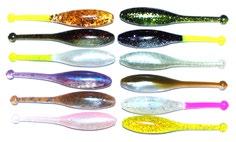
Early morning and late afternoons will still be the best time to hit Lake Jackson, and cloudy days are always the best.

Captain Brian Barton 256-412-0969 Brianbartonoutdoors@aol.com

Captain Jake Davis Mid-South Bass Guide Service 615-613-2382 www.midsouthbassguide.com
Joe Dunn Dunn’s Sports 334-636-0850
33356 Hwy. 43, Thomasville, AL
Captain Lee Pitts 256-390-4145 www.pittsoutdoors.com
Captain Sam Williams Hawks Fishing Guide Service 334-355-5057 www.hawksfishingguideservice.com
Captain Wayne Miller
Mobile-Tensaw Delta Guide Service 251-455-7404 Millewa12000@yqhoo.com

Randy Jackson Riverside Fly Shop 16027 Hwy 69N Jasper, Al 256-287-9582 riversideflyshop.com
Jeff DuBree Whippoorwill Lodge 850-875-2605 Fishtalquin@gmail.com
Rob Baker Wilderness Way 850-877-7200 3152 Shadeville Road Crawfordville, FLA
www.pureflats.com
7:01 PM 7:45 PM 8:30 PM 9:14 PM 10:01 PM 10:49 PM 11:39 PM --:-12:31 AM 1:23 AM 2:13 AM 3:02 AM 3:48 AM 4:32 AM 5:15 AM 5:56 AM 6:38 AM 7:22 AM 8:09 AM 9:00 AM 9:57 AM 10:59 AM 12:06 PM 1:13 PM 2:17 PM 3:15 PM 4:09 PM 4:58 PM 5:44 PM 6:29 PM 7:13 PM
state.
state
6:38 AM 7:23 AM 8:07 AM 8:52 AM 9:37 AM 10:24 AM 11:14 AM 12:05 PM 12:57 PM 1:48 PM 2:38 PM 3:26 PM 4:11 PM 4:54 PM 5:36 PM 6:17 PM 7:00 PM 7:45 PM 8:34 PM 9:28 PM 10:28 PM 11:32 PM --:-12:39 AM 1:45 AM 2:47 AM 3:43 AM 4:34 AM 5:21 AM 6:06 AM 6:51 AM

03:01 AM / 1.09 10:36 PM / 0.88 09:33 PM / 0.97 08:49 PM / 1.15 08:33 PM / 1.35 08:47 PM / 1.50 09:15 PM / 1.58 09:50 PM / 1.61 10:30 PM / 1.61 11:11 PM / 1.58 11:51 PM / 1.54
12:29 AM / 1.48 01:03 AM / 1.37 01:31 AM / 1.21 01:44 AM / 1.00 11:56 PM / 0.78 09:20 PM / 0.72 08:14 PM / 0.82 07:42 PM / 1.03 07:47 PM / 1.26 08:14 PM / 1.48 08:57 PM / 1.66 09:49 PM / 1.79 10:44 PM / 1.85 11:39 PM / 1.83 12:29 AM / 1.70 01:14 AM / 1.46 01:49 AM / 1.13 01:53 AM / 0.76 08:37 PM / 0.58 07:40 PM / 0.74 07:00 PM / 1.01
02:17 PM / 0.17
01:23 PM / 0.37 07:16 AM / 0.30 07:11 AM / -0.00 07:35 AM / -0.23 08:07 AM / -0.39 08:44 AM / -0.48 09:25 AM / -0.53 10:10 AM / -0.55 10:56 AM / -0.57 11:38 AM / -0.57
12:14 PM / -0.54 12:40 PM / -0.46 12:56 PM / -0.33 01:00 PM / -0.15
12:48 PM / 0.04 12:08 PM / 0.23 05:37 AM / 0.13 05:56 AM / -0.15 06:42 AM / -0.41 07:40 AM / -0.63 08:41 AM / -0.81 09:43 AM / -0.94 10:42 AM / -1.00 11:35 AM / -0.98 12:20 PM / -0.85 12:53 PM / -0.62 01:00 PM / -0.32 12:20 PM / -0.05 11:08 AM / 0.10 06:21 AM / -0.04
1 2 3 4 5 6
02:34 AM / 0.83 09:25 PM / 0.64 08:26 PM / 0.73 07:26 PM / 0.90 07:16 PM / 1.09 07:37 PM / 1.23 08:09 PM / 1.31 08:46 PM / 1.35 09:25 PM / 1.34 10:07 PM / 1.31 10:49 PM / 1.27 11:30 PM / 1.20
12:09 AM / 1.11 12:42 AM / 0.98 01:04 AM / 0.81 10:29 PM / 0.62 07:46 PM / 0.60 06:55 PM / 0.70 06:40 PM / 0.86 06:49 PM / 1.03 07:17 PM / 1.20 07:59 PM / 1.33 08:48 PM / 1.42 09:40 PM / 1.46 10:33 PM / 1.44 11:26 PM / 1.34 12:16 AM / 1.16 01:00 AM / 0.91 01:26 AM / 0.62 07:23 PM / 0.46 06:09 PM / 0.60 05:23 PM / 0.85
01:03 PM / 0.14
12:10 PM / 0.29
06:41 AM / 0.20 06:25 AM / -0.04 06:42 AM / -0.24 07:11 AM / -0.36 07:47 AM / -0.44 08:30 AM / -0.47 09:18 AM / -0.47 10:06 AM / -0.47 10:48 AM / -0.45 11:20 AM / -0.41 11:39 AM / -0.34 11:47 AM / -0.24 11:42 AM / -0.12
11:27 AM / 0.02 10:41 AM / 0.14 06:03 AM / 0.06 05:45 AM / -0.18 06:16 AM / -0.40 07:02 AM / -0.59 07:56 AM / -0.74 08:56 AM / -0.83 09:56 AM / -0.86 10:50 AM / -0.83 11:34 AM / -0.70 12:01 PM / -0.49 11:55 AM / -0.24 11:04 AM / -0.02 09:55 AM / 0.09 06:09 AM / -0.03
1 2 3 4 5 6 7 8 9
04:20 AM / 1.04 11:11 PM / 0.80 10:12 PM / 0.91 09:12 PM / 1.12 09:02 PM / 1.36 09:23 PM / 1.54 09:55 PM / 1.64 10:32 PM / 1.68 11:11 PM / 1.68 11:53 PM / 1.64
02:35 PM / 0.17
Th
01:42 PM / 0.36 08:13 AM / 0.25 07:57 AM / -0.06 08:14 AM / -0.29 08:43 AM / -0.46 09:19 AM / -0.55 10:02 AM / -0.58 10:50 AM / -0.59 11:38 AM / -0.58 12:20 PM / -0.56 12:52 PM / -0.51 01:11 PM / -0.42 01:19 PM / -0.30 01:14 PM / -0.15 12:59 PM / 0.02
12:40 PM / 0.19
12:35 AM / 1.58 01:16 AM / 1.50 01:55 AM / 1.39 02:28 AM / 1.23 02:50 AM / 1.02 12:15 AM / 0.77 09:32 PM / 0.75 08:41 PM / 0.87 08:26 PM / 1.07 08:35 PM / 1.29 09:03 PM / 1.50 09:45 PM / 1.66 10:34 PM / 1.78 11:26 PM / 1.83
12:19 AM / 1.80 01:12 AM / 1.67 02:02 AM / 1.45 02:46 AM / 1.14 03:12 AM / 0.78 09:09 PM / 0.58 07:55 PM / 0.76 07:09 PM / 1.06
01:08 AM / 0.66 08:37 PM / 0.52 07:03 PM / 0.64 07:23 PM / 0.80 07:49 PM / 0.92 08:13 PM / 1.01 08:26 PM / 1.06 08:05 PM / 1.09 08:23 PM / 1.12 08:53 PM / 1.12 09:28 PM / 1.10 10:07 PM / 1.06 10:47 PM / 1.00 11:23 PM / 0.92 11:51 PM / 0.80
12:00 AM / 0.65 06:19 PM / 0.48 12:07 AM / 0.49 06:37 PM / 0.62 07:00 PM / 0.78 07:18 PM / 0.94 07:17 PM / 1.10 07:33 PM / 1.24 08:07 PM / 1.33 08:47 PM / 1.36 09:33 PM / 1.33 10:22 PM / 1.22 11:06 PM / 1.07 11:40 PM / 0.87 11:46 PM / 0.65 09:58 PM / 0.51 05:15 PM / 0.64 06:00 PM / 0.82
10:35 AM / 0.30 04:44 AM / 0.19 05:12 AM / 0.02 05:36 AM / -0.11 05:55 AM / -0.18 06:17 AM / -0.21 06:51 AM / -0.20 08:39 AM / -0.17 09:52 AM / -0.15 10:42 AM / -0.12 11:27 AM / -0.08 11:52 AM / -0.01 11:43 AM / 0.07 09:38 AM / 0.17 09:44 AM / 0.23 09:59 PM / 0.46 09:34 AM / 0.28
05:00 AM / 0.20 05:06 AM / 0.02 05:04 AM / -0.15 05:25 AM / -0.30 06:00 AM / -0.40
06:47 AM / -0.43 07:59 AM / -0.41 09:27 AM / -0.35 10:18 AM / -0.25 10:50 AM / -0.10 11:03 AM / 0.07 09:11 AM / 0.24 07:07 AM / 0.28 03:52 AM / 0.16
Yamaha’s award-winning 4.2-liter V6 four strokes set the standard for offshore performance. Not only do they feature class-leading 4.2-liter displacement, but they’re also:

10 11 12 13 14 15 16 17 18 19 20 21 22 23 24 25 26 27 28 29 30 31 877.314.1237

03:43 AM / 1.01
10:31 PM / 0.69
08:30 PM / 0.81
07:57 PM / 1.06
07:57 PM / 1.29 08:15 PM / 1.45
08:44 PM / 1.53
09:19 PM / 1.55
10:00 PM / 1.54
10:43 PM / 1.51 11:25 PM / 1.48
12:02 AM / 1.43 12:35 AM / 1.34 01:01 AM / 1.20 01:16 AM / 1.00
12:31 AM / 0.74
08:49 PM / 0.63 07:32 PM / 0.73
07:07 PM / 0.93 07:13 PM / 1.15
07:41 PM / 1.35
08:25 PM / 1.52
09:20 PM / 1.65
10:18 PM / 1.73
11:16 PM / 1.73
12:11 AM / 1.63
01:01 AM / 1.42 01:46 AM / 1.10
02:23 AM / 0.71
08:20 PM / 0.43
06:40 PM / 0.63 06:10 PM / 0.94
01:58 PM / 0.08
01:07 PM / 0.34
04:55 AM / 0.23
05:37 AM / -0.09
06:17 AM / -0.32
06:58 AM / -0.45
07:43 AM / -0.51
08:35 AM / -0.53
09:30 AM / -0.53
10:24 AM / -0.53
11:09 AM / -0.54
11:42 AM / -0.52 12:06 PM / -0.47 12:20 PM / -0.36 12:23 PM / -0.20 12:11 PM / -0.01
11:21 AM / 0.16 04:34 AM / 0.08 04:50 AM / -0.22 05:32 AM / -0.48 06:28 AM / -0.68 07:34 AM / -0.84 08:45 AM / -0.95 09:53 AM / -1.02 10:52 AM / -1.01 11:39 AM / -0.90 12:13 PM / -0.68 12:27 PM / -0.38 12:07 PM / -0.07 10:32 AM / 0.14 04:20 AM / -0.08
03:10 AM / 0.49
09:58 PM / 0.34
07:57 PM / 0.40
07:24 PM / 0.52
07:24 PM / 0.63 07:42 PM / 0.71 08:11 PM / 0.75 08:46 PM / 0.76 09:27 PM / 0.75
10:10 PM / 0.74 10:52 PM / 0.73 11:29 PM / 0.70
12:02 AM / 0.66 12:28 AM / 0.59 12:43 AM / 0.49 11:58 PM / 0.36 08:16 PM / 0.31 06:59 PM / 0.36 06:34 PM / 0.46 06:40 PM / 0.56 07:08 PM / 0.66 07:52 PM / 0.74 08:47 PM / 0.81 09:45 PM / 0.84 10:43 PM / 0.85 11:38 PM / 0.80
12:28 AM / 0.70 01:13 AM / 0.54 01:50 AM / 0.35 07:47 PM / 0.21 06:07 PM / 0.31 05:37 PM / 0.46
01:24 PM / 0.03
12:33 PM / 0.11 04:21 AM / 0.08 05:03 AM / -0.03 05:43 AM / -0.10 06:24 AM / -0.15 07:09 AM / -0.17 08:01 AM / -0.17 08:56 AM / -0.17 09:50 AM / -0.18 10:35 AM / -0.18
11:08 AM / -0.17 11:32 AM / -0.15 11:46 AM / -0.12 11:49 AM / -0.07
11:37 AM / -0.00 10:47 AM / 0.05 04:00 AM / 0.03 04:16 AM / -0.07 04:58 AM / -0.16 05:54 AM / -0.23 07:00 AM / -0.28 08:11 AM / -0.31 09:19 AM / -0.34 10:18 AM / -0.33 11:05 AM / -0.30 11:39 AM / -0.23 11:53 AM / -0.13 11:33 AM / -0.02
09:58 AM / 0.05 03:46 AM / -0.03

12:26 AM / 1.23
07:21 PM / 0.91
12:39 AM / 0.91
06:45 PM / 1.04
06:31 PM / 1.20 05:58 PM / 1.36
05:57 PM / 1.49
06:24 PM / 1.56 06:59 PM / 1.57 07:38 PM / 1.56 08:19 PM / 1.52 09:01 PM / 1.48 09:42 PM / 1.43 10:21 PM / 1.37 10:55 PM / 1.28 11:22 PM / 1.15
11:31 PM / 0.97
06:46 PM / 0.81
05:33 PM / 0.94
05:11 PM / 1.12 05:09 PM / 1.32
05:29 PM / 1.51
06:05 PM / 1.66
06:51 PM / 1.76 07:41 PM / 1.80 08:33 PM / 1.77 09:24 PM / 1.65 10:11 PM / 1.46 10:46 PM / 1.20 11:05 PM / 0.90
05:34 PM / 0.58
10:49 PM / 0.59
05:06 PM / 0.77
06:00 PM / 0.98
10:52 AM / 0.41 09:47 PM / 0.88
10:27 AM / 0.57
04:09 AM / 0.55 04:30 AM / 0.25 04:58 AM / 0.00 05:28 AM / -0.19 05:57 AM / -0.32 06:28 AM / -0.39 07:06 AM / -0.41 07:49 AM / -0.40 08:32 AM / -0.34 09:10 AM / -0.26 09:39 AM / -0.14 09:56 AM / 0.01 09:56 AM / 0.17 09:37 AM / 0.33 09:09 AM / 0.45 03:37 AM / 0.42 03:16 AM / 0.12 03:44 AM / -0.18 04:29 AM / -0.46 05:25 AM / -0.67 06:27 AM / -0.80 07:31 AM / -0.83 08:31 AM / -0.78 09:25 AM / -0.62 10:09 AM / -0.38 10:14 AM / -0.08 08:42 AM / 0.15 07:56 PM / 0.55 08:17 AM / 0.28 03:27 AM / 0.16
01:48 AM / 1.01
08:25 PM / 0.70
07:13 PM / 0.86
07:11 PM / 1.06
07:16 PM / 1.25 07:22 PM / 1.39 07:36 PM / 1.47
08:03 PM / 1.51 08:39 PM / 1.51 09:20 PM / 1.49 10:03 PM / 1.45 10:46 PM / 1.39 11:26 PM / 1.30
12:02 AM / 1.17 12:34 AM / 0.98 12:57 AM / 0.75 06:59 PM / 0.61 06:29 PM / 0.73 06:16 PM / 0.91 06:13 PM / 1.11 06:36 PM / 1.32 07:15 PM / 1.49 08:03 PM / 1.61 08:59 PM / 1.67 09:59 PM / 1.64 10:58 PM / 1.54 11:50 PM / 1.33
12:31 AM / 1.05 12:49 AM / 0.70 06:23 PM / 0.41 05:40 PM / 0.61 05:46 PM / 0.83
12:21 PM / 0.18
11:41 AM / 0.38 04:28 AM / 0.31
05:00 AM / 0.02 05:38 AM / -0.19 06:19 AM / -0.34
07:00 AM / -0.42 07:42 AM / -0.47 08:21 AM / -0.48 08:58 AM / -0.48 09:30 AM / -0.46 09:56 AM / -0.42 10:17 AM / -0.34 10:35 AM / -0.24 10:47 AM / -0.10 10:45 AM / 0.04
09:55 AM / 0.17 04:43 AM / 0.14 04:34 AM / -0.14 05:02 AM / -0.41 05:48 AM / -0.64 06:43 AM / -0.83 07:41 AM / -0.95 08:36 AM / -1.01 09:27 AM / -0.97 10:12 AM / -0.83 10:47 AM / -0.60 10:58 AM / -0.31 10:32 AM / -0.04
/ 0.12
AM / -0.03
02:58 AM / 1.41 11:21 PM / 1.03 08:49 PM / 1.11 08:03 PM / 1.39 08:04 PM / 1.67 08:24 PM / 1.88 08:51 PM / 2.00 09:22 PM / 2.06 09:56 PM / 2.06 10:31 PM / 2.03 11:08 PM / 1.97 11:46 PM / 1.87
12:22 AM / 1.73 12:55 AM / 1.54 01:21 AM / 1.30
01:19 AM / 1.01
10:00 PM / 0.78 07:50 PM / 0.87 07:16 PM / 1.11 07:20 PM / 1.40 07:46 PM / 1.70 08:25 PM / 1.95 09:12 PM / 2.13 10:04 PM / 2.21 10:57 PM / 2.18 11:51 PM / 2.01
12:41 AM / 1.71 01:26 AM / 1.31 01:49 AM / 0.84 09:34 PM / 0.48 06:51 PM / 0.67 06:26 PM / 0.98
01:52 PM / 0.42
12:58 PM / 0.74 04:49 AM / 0.49 05:25 AM / 0.11
06:03 AM / -0.18 06:40 AM / -0.38
07:16 AM / -0.49 07:53 AM / -0.55 08:33 AM / -0.56 09:15 AM / -0.53 09:58 AM / -0.49
10:41 AM / -0.42
11:20 AM / -0.32 11:49 AM / -0.18 12:04 PM / 0.00 11:54 AM / 0.21
10:42 AM / 0.39 04:42 AM / 0.23 04:45 AM / -0.16
05:18 AM / -0.54 06:03 AM / -0.87 06:54 AM / -1.12 07:49 AM / -1.27 08:48 AM / -1.30 09:48 AM / -1.22 10:45 AM / -1.03 11:35 AM / -0.72 12:08 PM / -0.35 11:58 AM / 0.03 08:36 AM / 0.25 04:23 AM / -0.12


01:54 AM / 1.19
09:19 PM / 0.91
08:02 PM / 1.02
07:33 PM / 1.21 06:33 PM / 1.45
07:04 PM / 1.64

07:41 PM / 1.77
08:19 PM / 1.84 08:58 PM / 1.87 09:38 PM / 1.87 10:21 PM / 1.84 11:09 PM / 1.77
12:02 AM / 1.68
12:50 AM / 1.55
01:30 AM / 1.35
02:02 AM / 1.10
07:42 PM / 0.90
02:14 AM / 0.79
07:05 PM / 1.03 05:49 PM / 1.29 06:18 PM / 1.55
06:55 PM / 1.80 07:39 PM / 2.01 08:27 PM / 2.15 09:16 PM / 2.21
10:05 PM / 2.17 10:57 PM / 2.03
11:52 PM / 1.80
12:41 AM / 1.50
01:14 AM / 1.15 07:52 PM / 0.89 06:25 PM / 1.05 06:00 PM / 1.33
11:53 AM / 0.43
11:45 AM / 0.63
05:30 AM / 0.46
04:53 AM / 0.19
05:20 AM / -0.03
05:54 AM / -0.16
06:29 AM / -0.23
07:05 AM / -0.25
07:43 AM / -0.23
08:24 AM / -0.18
09:14 AM / -0.13
10:01 AM / -0.06
10:22 AM / 0.02
10:36 AM / 0.13
10:56 AM / 0.27
11:17 AM / 0.44
11:55 PM / 0.74
11:28 AM / 0.63
03:32 AM / 0.45
04:02 AM / 0.10
04:40 AM / -0.20 05:27 AM / -0.44
06:22 AM / -0.60
07:20 AM / -0.68
08:20 AM / -0.65 09:21 AM / -0.55
10:18 AM / -0.36 10:58 AM / -0.10 11:09 AM / 0.21
10:21 AM / 0.47
10:03 AM / 0.64 04:55 AM / 0.37











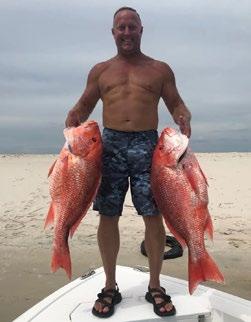 Randy Pope Great fish and good food in both hands. Who could ask for more on a fishing trip?
Shane Traylor showing off his snapper
Randy Pope Great fish and good food in both hands. Who could ask for more on a fishing trip?
Shane Traylor showing off his snapper

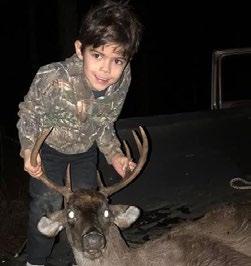

 Roman Harrington 10 pt Butler,Al Biggest buck so far!
Levi Easterbrook with some specks caught off Dauphin Island beach
Jon Chandler with a bragging size largemouth
5 year old Parker Corley takes his first deer, a nice 6pt with a crossbow
Deer
Roman Harrington 10 pt Butler,Al Biggest buck so far!
Levi Easterbrook with some specks caught off Dauphin Island beach
Jon Chandler with a bragging size largemouth
5 year old Parker Corley takes his first deer, a nice 6pt with a crossbow
Deer
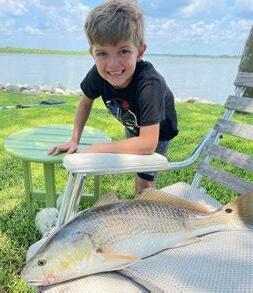











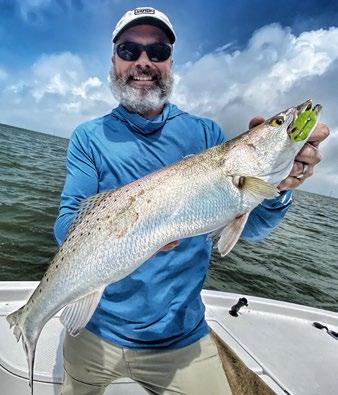
At Great Days Outdoors we are blessed with not only top-notch writers who know whereof they write but we also have a host of resources, as in captains, guides and professional and experi enced anglers to provide the “in-the-knows” nuts and bolts information to tie it all together.
One of the main targets of inshore anglers in December speckled trout. I tapped that vast re source of expert information looking for specific tips on how to catch speckled trout in cold water and came up with the following.
Find warmer water and you will find specs. Fish in rivers, canals and streams in deeper holes which tend to be warmer water, which also draws baitfish. Keep in mind that “deeper” is relative. In one river or canal it may be 25-50 feet while in another only eight feet deep.
Fish deeper in the early morning and shallow later on when the sun starts to warm the water.
In colder water speckled specks aren’t fussy about what they eat as long as it isn’t moving too fast. Baby crabs, small shrimp, little croakers and mullet are good choices.
For artificials, small 1/8 to ¼ ounce jigheads topped with soft plastic grubs or three-to-fiveinch paddle tails are a good fit.
In terms of tackle, a light to medium outfit spooled with braided line with a five-to-six-foot monofilament or fluorocarbon leader is a normal setup. Make sure that your leader is lighter than your main line so you can easily and quickly break off snagged lures and hooks, which hap pens when bouncing bait off the bottom.
Use a very slow retrieve, with short hops of the lure or bait off of the bottom, to generate strikes and keep in mind that it will be a “soft bite” so anglers need to pay attention.
Dress warmly and have fun bringing home Christmas fish dinner. 877.314.1237
Cold chills.
Some words cause shivers to creep up my neck like a spider crawling. It’s not because I’m a jumpy fellow or afraid of the dark. Nothing like that. It’s just that some words are never spoken in a vacuum. Some words tell the future. And sometimes, the future grips your gut like a steel trap.
For example, if you want to strike terror in a hunting camp, just walk over by the fire, let the shadows fall across your face and say these words, “Hey y’all, watch this.”
War veterans will dive for cover.
Words like these foreshadow events so stupid that even the lionhearted will cringe.
Over the years, I’ve cataloged phrases that may come across as thoughtful or even inquisitive. Every hunter eventually mutters them, but when they do I suggest you have your cell phone set to speed dial 911. Then, grab a broom handle to whack your partner before he can do whatever it was he had in mind. If that fails, drive straight to the emergency room, your insurance agent, or the nearest church. One of these will be absolutely lifesaving and the other two couldn’t hurt. For instance, around the hunting camp, you’ll hear the true meaning of “human error.” Usually a phrase like one of these precedes whatever dismal event happens next.
“I wonder if there’s any gas left in this?”
“When was the last time one of these broke twice?”
“Did something in here just move?”
“You allergic to anything?”
“The fire should burn itself out.”
“You didn’t eat that, did you?”
“Why don’t you light a match and see.”
“What’s that hissing noise?”
“How did I know this thing used batteries?”
“I don’t know, just plug it in.”
“You ever lit a gas lantern before?”
“I say we take nothing but our rifles, some flour, and a frying pan and live off the land.”
“This dry creek bed ought to be a dandy site to pitch our tent as long as it doesn’t rain.”
“I got this GPS unit just for this wilderness hunt. Surely it can’t be that hard to figure out how to use it.”

“I don’t have my glasses on, but was that pepper all over your eggs?”
Just one of these phrases will make you want to pitch your tent in a Holiday Inn. Of course, if the manager’s smart, he won’t let you.
Sometimes, we combine hunting with boating, using water access to save time or to get us into remote areas. Boating can lull you into a false sense of security. No flames, no creepycrawlies, and no getting stuck in the mud. Just gently lapping waves on the bow that relax you and make you unaware of the terrors that lie ahead. Disaster can sneak across the water like a fog, hiding from view any warning until your partner mutters something like this.
“Did you put in the plug?”
“Have I ever shown you top speed on this baby?”
“That hose sure resembles a snake.”
“What’s this wire go to?”
“Did you pull up the parking brake?”
“What color is a cottonmouth?”
“I keep forgetting . . . is it good snakes have round eyes or the other way around?”
“Do you think this boat will outrun hornets?”
“All the years I’ve been running this lake, I’ve never hit a stump.”
“Did you pull up the anchor?”
“Dark? Shoot, I could drive this boat home with my eyes shut.”
“Let me lift the cover on your outboard. That fuel mix sounds a little too rich.”
“Do you hear water gurgling?”
“It doesn’t look like much of a cloud.”
Phrases like these within the confines of a boat can only be compared to crickets chirping the theme song to Jaws.
Once we’re on the ground and fully armed, you would think we’d be able to defend ourselves from anything. Yet sometimes the enemy is not one that can be stopped by a bullet, whether it’s made of lead, silver, or garlic. Sheer stupidity knows no defense. And that’s the best description for whatever happens next when your
hunting partner says something like this.
“You reckon this limb will hold me?”
“I should have asked before you sat down, but is my sandwich on the seat?”
“Ah, it’s never too cold for my truck to start.”
“What happens if I plug this into the cigarette lighter?”
“Did I give you the keys?”
“Let’s go sling some mud with that four-wheeler.”
“What’s a little snow to guys like us?”
“You think there’s anything to that deal about old guns not shooting steel shot?”
“I smell a skunk. You seen the dogs lately?”
“This old wooden bridge has been here a hundred years. Surely it can handle one more truck.”
“Yeah, this joint looks a little rough, but I know just how to talk to these good ol’ boys.”
“Heck, you don’t need a gunsmith. It’s only a jammed shell.”
Across all these activities, there is one universal phrase, more blood curdling than any other. When we hear it, the hair goes up on our necks, our heads pivot ever so slowly to glance back over our shoulders in the direction of the buddy who mutters it. Someday, I fully expect these to be the last words I hear or the last words my partner ever utters, at twilight on some foggy evening, just as a twig snaps and he looks back to whisper.
“How fast can you run anyway?”
JIM has learned to duck at the sound of these words . You can find his books of award-winning humor on Amazon or at www . acreektricklesthroughit com .


